
- AMERICA'S CUP
- CLASSIFIEDS
- NEWSLETTERS
- SUBMIT NEWS


Cole Brauer and the Class40 First Light in Global Solo Challenge: A woman's breath over the ocean
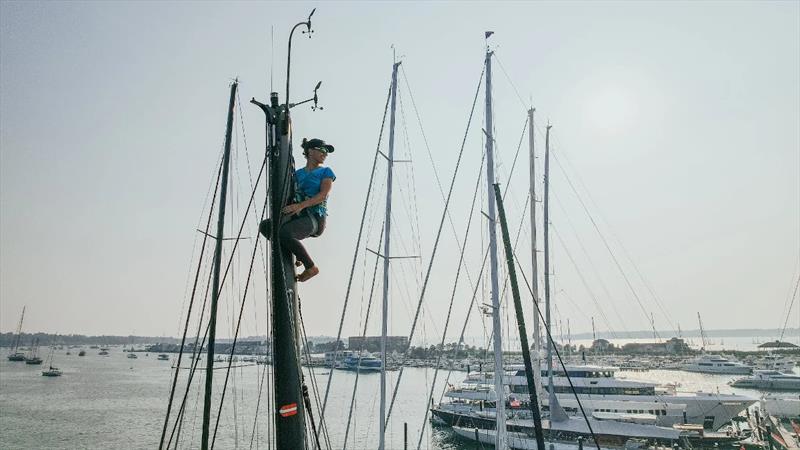
Related Articles
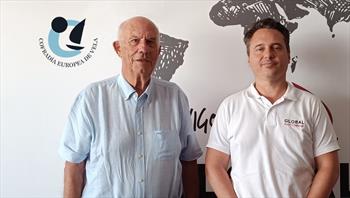
BREAKING: NASA says astronauts stuck on space station will return in SpaceX capsule
Sailor Cole Brauer makes history as the first American woman to race solo around the world
Aboard her 40-foot racing boat First Light , 29-year-old Cole Brauer just became the first American woman to race nonstop around the world by herself.
The New York native pulled into A Coruña, Spain, on Thursday after a treacherous 30,000-mile journey that took 130 days.
She thanked a cheering crowd of family and fans who had been waiting for her on shore.
“This is really cool and so overwhelming in every sense of the word,” she exclaimed, before drinking Champagne from her trophy.
The 5-foot-2 powerhouse placed second out of 16 avid sailors who competed in the Global Solo Challenge, a circumnavigation race that started in A Coruña with participants from 10 countries. The first-of-its-kind event allowed a wide range of boats to set off in successive departures based on performance characteristics. Brauer started on Oct. 29, sailing down the west coast of Africa, over to Australia, and around the tip of South America before returning to Spain.
Brauer is the only woman and the youngest competitor in the event — something she hopes young girls in and out of the sport can draw inspiration from.
“It would be amazing if there was just one girl that saw me and said, ‘Oh, I can do that too,’” Brauer said of her history-making sail.
It’s a grueling race, and more than half of the competitors have dropped out so far. One struck something that caused his boat to flood, and another sailor had to abandon his ship after a mast broke as a severe storm was moving in.
The four-month journey is fraught with danger, including navigating the three “Great Capes” of Africa, Australia and South America. Rounding South America’s Cape Horn, where the Atlantic and Pacific Oceans meet, is often likened to climbing Mount Everest because of its perfect storm of hazards — a sharp rise in the ocean floor and whipping westerly winds push up massive waves. Combined with the frigid waters and stray icebergs, the area is known as a graveyard for ships, according to NASA. Brauer said she was “so unbelievably stoked” when she sailed past Cape Horn in January.
Marco Nannini, organizer of the Global Solo Challenge, said the comparison to scaling Mount Everest doesn’t capture the difficulty of the race. Sailing solo means not just being a skipper but a project manager — steering the boat, fixing equipment, understanding the weather and maintaining one’s physical health.
Nannini cited the relatively minuscule number of people who have sailed around the world solo — 186, according to the International Association of Cape Horners — as evidence of the challenges that competitors face. More than 6,000 people have climbed Mount Everest, according to High Adventure Expeditions .
Brauer stared down 30-foot waves that had enough force to throw her across the boat. In a scare caught on camera, she badly injured her rib near the halfway point of the event. At another point, her team in the U.S. directed Brauer to insert an IV into her own arm due to dehydration from vomiting and diarrhea.
She was able to stay in constant communication with members of her team, most of whom are based in New England, and keep herself entertained with Netflix and video calls with family through Starlink satellites. That’s also how Brauer was able to use Zoom to connect with NBC News for an interview, while she was sailing about 1,000 miles west of the Canary Islands.
While Brauer was technically alone on First Light, she had the company of 450,000 followers on Instagram, where she frequently got candid about life on an unforgiving sea while reflecting on her journey.
“It all makes it worth it when you come out here, you sit on the bow, and you see how beautiful it is,” she said in an Instagram video, before panning the camera to reveal the radiant sunrise.
Brauer grew up on Long Island but didn’t learn to sail until she went to college in Hawaii. She traded in her goal of becoming a doctor for life on the water. But she quickly learned making a career as a sailor is extremely difficult, with professional racers often hesitant to welcome a 100-pound young woman on their team.
Even when she was trying to find sponsors for the Global Solo Challenge, she said a lot of people “wouldn’t touch her with a 10-foot pole” because they saw her as a “liability.”
Brauer’s message to the skeptics and naysayers? “Watch me.”
“I push so much harder when someone’s like, ‘No, you can’t do that,’ or ‘You’re too small,’” Brauer explained.
“The biggest asset is your mental strength, not the physical one,” Nannini said. “Cole is showing everyone that.”
Brauer hopes to continue competing professionally and is already eyeing another around-the-world competition, but not before she gets her hands on a croissant and cappuccino.
“My mouth is watering just thinking about that.”
Emilie Ikeda is an NBC News correspondent.
Practical Boat Owner
- Digital edition

Cole Brauer is the first American woman to complete a solo, non-stop circumnavigation via the three Great Capes
- Katy Stickland
- March 7, 2024
Cole Brauer is the second entrant to finish the Global Solo Challenge and has made history by becoming the first American woman to complete a solo, non-stop circumnavigation around the world via the three Great Capes

Cole Brauer took 130 days, two hours, 45 minutes and 38 seconds to race around the world. Credit: Cole Brauer – First Light @colebraueroceanracing/Globe Solo Challenge Credit: Cole Brauer – First Light @colebraueroceanracing/Globe Solo Challenge
The goal of Cole Brauer was always to become the first American woman to race solo and non-stop around the world via the three Great Capes, and this morning, the 29-year-old made that dream a reality.
At 0723UTC, Cole crossed the finish line at A Coruña, Spain in her 2008 OCD Class 40, First Light , and made history.
Speaking after coming alongside, Cole Brauer said: “This is awesome, this is really cool. The sun’s out and this is really nice. Last night was really, really rough and tough but this really feels very good. When I first called Marco [Global Solo Challenge organiser], the first thing he said was you are going to get a lot of publicity and I was like, no, no, it will be OK, it will be a little bit, but this is well beyond every expectation. Thank you all for coming. It means more than you guys will ever know. I think I am done sailing for today! Let’s go get beers!”

Cole Brauer sailed a total of 27,910 nm miles during the race. Credit: Cole Brauer – First Light @colebraueroceanracing/Globe Solo Challenge
Cole Brauer was presented with her trophy by the winner of the Global Solo Challenge, Philippe Delamere, who crossed the finish line on 24 February.
“You deserve that a lot,” he told her. “I am very happy and proud; I am very happy and proud that you have this. One day someone will say do you know Cole, she is that girl doing really well in the Vendee [Globe ] and I will say yes, of course I know, I gave her that trophy.”
Cole Brauer began sailing while living in Hawaii, where she attended university. In 2018, she decided to begin sailing solo, having read Ellen MacArthur’s book, Taking on the World .
“That was it. I was going to race solo around the world. I was going to do it as a 5’2’’ 100lb woman. Just like Ellen MacArthur. And the best part! I actually loved single-handed sailing more than fully crewed by a long shot! I had found my footing,” she said.

Cole Brauer shared her race reports on her Instagram account, earning her nearly half a million followers. Credit: Cole Brauer – First Light @colebraueroceanracing/Globe Solo Challenge
Her co-skipper, Cat Chimney recommended that she sign up for the Global Solo Challenge, a solo, non-stop race around the world via the three Great Capes, which started from A Coruña in August 2023
This would then give Cole Brauer and her team four years to prepare for the 2028 Vendee Globe. She has previously tried for selection for The Ocean Race but was told that at 5ft 2in, she was too short.
But her goal was also to show “that this very male-dominated sport and community CAN become more open and less “traditional.”
Ahead of the Global Solo Challenge, she said: “I will be fighting against the constant sexual, verbal, and physical harassment for not just myself but for the corinthian and professional women sailors in this sport. As professional sailors, we have been fighting for many years for equal pay (we are paid significantly less than a man in the same position), we are harassed by teammates, owners, clients, race organisers, and many others in this community. Just as well as this community has built me up it has broken me and my fellow female teammates down. I am doing this race for them. Please follow safesail.org, this is an organisation that is changing the world of sailing as we know it. It is giving people an opportunity to report harassment to listening ears in the sailing community.”
Continues below…

Pip Hare: ‘I now have a fighting chance for Vendée Globe 2024 success’
The six month refit aims to give Pip Hare's Imoca 60 Medallia "a fighting chance" against the 13 new-build boats,…

Maiden makes history again as Vuyisile Jaca, Junella King and Maryama Seck become the first black female crew members to race around Cape Horn
Maiden crew members Vuyisile Jaca, Junella King and Maryama Seck have made history by becoming the first black female crew…

Jessica Watson – the real sailor behind the True Spirit film
Whilst the new Netflix True Spirit movie was being filmed, celebrating Jessica Watson's real-life teenage solo, non-stop global circumnavigation, the…

Ann Davison: transatlantic first
Ann Davison became the first woman to sail across the Atlantic solo when she arrived in New York in November…
Cole Brauer, who is from Boothbay, Maine, started the race on 29 October 2023, one of 16 starters.
She quickly made her way towards the front of the fleet passing into the southern Indian Ocean in December.
She always pushed hard, heading south to make the most of strong winds towards the Cape of Good Hope, although First Light was knocked down, which laid the boat at 90° and left Cole with several bruised ribs.
By Christmas Day, she had passed Cape Leeuwin.
By then, Philippe Delamere aboard his Actual 46, Mowgli was already in the Southern Ocean.
Throughout the race, she posted the highs and lows of sailing via her Instagram page @colebraueroceanracing , winning over 450,000 fans for her honest and enthusiastic race reports.

Rounding Cape Horn. Credit: Cole Brauer – First Light @colebraueroceanracing/Globe Solo Challenge
Cole Brauer rounded Cape Horn at 12.30UTC on 26 January.
Her approach to the landmark was cautious, as she was between two low-pressure systems; her instinct and skill paid off as she managed to avoid the worst of the strong winds.
By mid-February, Cole had found the trade winds and had reduced the gap between First Light and Mowgli, although the Frenchman’s lead meant he was likely to take the win, which he did on 24 February.
Cole Brauer crossed the line 11 days and 19 hours after Philippe Delamere.
Cole Brauer’s corrected elapsed time is 130 days, 2 hours, 45 minutes, and 38 seconds. Philippe Delamere’s corrected elapsed time is 147 days, 1 hour, 3 minutes, and 37 seconds.

Cole Braucer sailed the Class 40, First Light during the race. The yacht used to be owned by Michael Hennessy, when it was known as Dragon . Credit: Cole Brauer – First Light @colebraueroceanracing/Globe Solo Challenge
Of the 16 skippers who crossed the start line, just seven remain in the race.
The Global Solo Challenge was always billed as a race like no other, allowing skippers of 34ft boats to race fairly against 55ft yachts, with the boats grouped by performance characteristics before setting off in staggered departures over an 11-week period, with the fastest boats trying to catch the slower boats. The first yacht to cross the finish line wins.
All boats entered into the Global Solo Challenge had to pass minimum stability criteria, including adequate watertight bulkheads.
As well as a 2,000-mile solo qualifying passage on the boat entered in the race, the skippers also had to complete a World Sailing/ISAF Approved Offshore Personal Survival Training course.
The route was to keep all of the three Great Capes: Good Hope, Leeuwin and Cape Horn to port and the ice limit to starboard.
The next Globe Solo Challenge will be taking place in 2027 , with the first boats leaving A Coruña on 28 August 2027.
Enjoy reading Cole Brauer is the first American woman to complete a solo, non-stop circumnavigation via the three Great Capes?
A subscription to Practical Boat Owner magazine costs around 40% less than the cover price .
Print and digital editions are available through Magazines Direct – where you can also find the latest deals .
PBO is packed with information to help you get the most from boat ownership – whether sail or power.
- Take your DIY skills to the next level with trusted advice on boat maintenance and repairs
- Impartial in-depth gear reviews
- Practical cruising tips for making the most of your time afloat
Follow us on Facebook , Instagram, TikTok and Twitter

NY skipper Cole Brauer overcame broken ribs, deteriorating boat to become first US woman to sail solo around the world
She sailed her way into the history books.
A 29-year-old skipper from New York has become the first US woman to sail solo around the world.
Cole Brauer, from Long Island, tearfully reunited with her family in A Coruña, Spain, on Thursday after a gruelling 30,000-mile journey that took 130 days.
The 5-foot-2 trailblazer placed second out of 16 in the daring Global Solo Challenge, which kicked off in October off the coast of the port city, located in northwestern Spain.
“I can’t believe it guys. I sailed around the world,” Brauer said as she approached the finish line in an Instagram live video. “That’s crazy. That’s absolutely crazy. This is awesome. Let’s just do it again. Let’s keep going!”
She was the only woman in the event and also the youngest competitor. She sailed into A Coruña to a cheering crowd just a day before International Women’s Day on March 8.
“It would be amazing if there was just one girl that saw me and said, ‘Oh, I can do that too,’” Brauer told NBC of her history-making effort. More than half of the other competitors has dropped out as of Thursday.
Brauer’s sailing profile on Global Solo Challenge’s website said her goal has always been to be “the First American Woman to Race Around the World.”
“With this goal, I hope to show that this very male-dominated sport and community can become more open and less ‘traditional,'” it reads.
The East Hampton native didn’t even take up sailing until she decamped to the University of Hawai’i for college in 2014, her profile explained.
“I grew up on a nature preserve, wandering through the tall grass of the creek and playing in the mud watching the tide come in,” she said of her childhood in Suffolk County.
“When I moved to Hawaii for university, all I wanted was to get out on the water. Feel at home. Accessing the sailing community in Hawaii was the logical step,” she added.
Brauer turned pro after college, and started seriously chasing the idea of a round-the-world race after her mentor, Tim Fetsch, sent her a book by record-setting female skipper Dame Ellen MacArthur.
By the time she set sail on her global adventure on Oct. 29, Brauer was already a record-setter: Last summer, she became the first woman to win the Bermuda One-Two race, the Providence Journal reported at the time.
Brauer documented the treacherous Global Solo Challenge for her 459,000 Instagram followers from aboard her beloved 40-foot monohull racing boat, First Light.
Like her pint-sized, 100-pound owner, First Light has a quicksilver edge – and is only large enough to typically hold a one- or two-person crew.
The race path took Brauer down the western coast of Africa before she sailed into the Southern Ocean in early December, where she’d cement second place in the challenge.
She often showed fans her peaceful mornings and on-board workout sessions in the Atlantic Ocean.
“Cole wants to prove you can go around the world and watch Netflix every once in a while, and wear your pajamas,” her media manager, Lydia Mullan, told the New York Times of the realistic look at boat life.
“As for her mental health, she’s really creating a space in her routine for herself, to create that joy she hasn’t seen in other sailors,” Mullan added.
But even Brauer’s tenacious outlook at times gave way for the hardships of living at sea.
In December, she suffered a rib injury when she was violently thrown across her boat because of broaching — when a boat unintentionally changes direction toward the wind — in the rough waters near Africa.
Despite the injury, Brauer said she had no other choice but to power through the pain and keep sailing.
“There’s no option at that point. You’re so far away from land that there’s no one who can rescue you or come and grab you,” she told the “Today” show Thursday. “You kind of just need to keep moving along and keep doing everything.”
Brauer’s grit during the journey recalled her time in Hawaii, when she borrowed from her background as a varsity soccer player, track and field runner, and cheerleader to thrive on the UH team — all while juggling her studies in nutrition science and a full-time job.
“It’s more strategy than anything,” she told the Honolulu Star-Advertiser in May 2016, when she captained the four-time national championship-qualifying team.
Brauer told NBC on Sunday that solo sailors “have to be able to do everything.”
“You have to be able to get up even when you’re so exhausted and you have to be able to fix everything on the boat.”
She reached the Pacific Ocean on December 29 and traveled past the southernmost point of South America and back into the Atlantic on January 27.
As she missed the holidays back home, Brauer decorated First Light with decorations fit for the occasion — pumpkins and ghosts for Halloween, a small felt Christmas tree, and broke out a dress and champagne for New Year’s Day.
Brauer also told the outlet that she started to feel the boat “deteriorating” and “starting to break down” as she made her final push through the Atlantic.
She then deliberately slowed her arrival time near the finish line to coordinate with the “first light” — when light is first seen in the morning — in honor of her boat’s namesake.
“I’m glad that out of all times, I’m coming in at first light,” Brauer said. “It’s only necessary.”
As she crossed the finish line, Brauer held two flares above her head to signal an end to her over four-month-long campaign.
“Amazing finish!!!! So stoked! Thank you to everyone that came together and made this process possible,” she wrote on Instagram.
Following her second-place finish, Brauer received a fresh cappuccino and croissant, the breakfast she had been craving for months while at sea, she said.
French skipper Philippe Delamare, who started the race a month before Brauer, won the Global Solo Challenge on Feb. 24.
He spent 147 days and 1 hour traveling around the globe.
A highlight of Brauer’s return to dry land will be reuniting with her mom, dad, and younger sister.
“They think I’m nuts,” Brauer told the Providence Journal of her parents’ response to her big sailing dream.
“I think that they’re much more proud of me now, especially because they’re starting to realize that this 10-year adventure I’ve been on isn’t just me gallivanting around the world…not really fulfilling what my mind and body was made to do, which is what my parents always wanted me to do,” she added.
Now, Brauer is also joining a storied lineage of esteemed female skippers who came before her.
Polish skipper Krystyna Chojnowska-Liskiewicz was the first woman to sail solo around the world, traveling almost 36,000 miles from 1976 to 1978.
British sailor Ellen MacArthur became the fastest solo sailor to sail around the world in 2005 when she traveled over 31,000 miles in 71 days, 14 hours, 18 minutes 33 seconds.
Brauer hopes to serve as the same inspiration as the sailing pioneers.
“I push so much harder when someone is like, ‘you can’t do that.’ And I’m like, ‘OK, watch me,’” she told NBC. “It would be amazing if there was one other girl who saw me and said, “Oh, I can do that too.”

This sailor left Newport to race solo/non-stop around the world, the first US woman to do it
NEWPORT – Newport's adopted daughter, all 100 pounds of her, is taking on the world.
Cole Brauer , in her beloved and trusted 40-foot yacht First Light, sailed out of Newport Tuesday morning, bound for Spain. In an endeavor she labels far more job than adventure, the 5-foot-2 Brauer is geared to be the first American female sailor to race solo/non-stop around the world.
Neither competing nor finishing – both significant accomplishments – is her primary goal. She's sailing to win. And she's not shaking in her boat shoes pondering the roughly four months being physically alone with First Light, sailing a reverse Magellan route, in the inaugural Global Solo Challenge . This non-stop race starts late next month in A Coruña, at the northwest tip of Spain, where it also finishes.
Brauer's longest previous solo sail was 1,200 miles from Fort Lauderdale to Newport. Global Solo is 26,000 nautical miles. That's quite a leap.
“It's not intimidating for me,” Brauer, 29, said recently at the Newport Shipyard, where First Light has been fine-tuned this summer. “Maybe I'm naive, but I've had my head down so many years just focused to this goal, going around the world, I've gotten very tolerant to this idea. Maybe it was intimidating in the beginning. But we're just taking it day by day.”
Why she left from Newport
Brauer rolled into town back in April and has had her very crowded van/home parked here for most of the spring and summer. She calls Newport the sailing capital of the world and said she couldn't think of a better place to get her boat ready for the big, big race.
In June, she won the 24 th biennial Bermuda One-Two , a Newport-to-Bermuda-to-Newport race that requires a solo sail on the first leg and a double hand on the way back.
On her solo leg south, Brauer landed in Bermuda 18 hours ahead of her closest competitor, with a time of 3 days, 4 hours, and 55 minutes. Primary skipper Brauer and secondary skipper Cat Chimney (a marine electrician from Newport), made the return trip in 3 days, 1 hour, and 30 minutes, beating the runner-up by 12 hours and making Brauer the Bermuda One-Two's first female winner. There were 25 boats in the field.
First Light's owners, the Day brothers of Chicago, then asked Brauer what should be next. They were, she said, anxious for another win. In a go-big-or-go-home move, Brauer suggested the Global Solo Challenge, and the Days, who years ago recruited her to sail their 40-footer, gave a quick thumbs up.
What does her family think about the race?
Brauer's parents, meanwhile, scratched their heads.
“They think I'm nuts,” she said with a smile. “They think I'm absolutely insane. I would say that they think I'm insane, but they're getting used to the idea. And I think that their much more proud of me now, especially because they're starting to realize that this 10-year adventure I've been on isn't just me gallivanting around the world, sailing on cool boats, having beverages at yacht clubs, and not really fulfilling what my mind and body was made to do, which is what my parents always wanted me to do.”
How she got into sailing
While she's starting to assemble quite the race sailing resume, Brauer does not head into her latest and greatest challenge with your typical sailing pedigree. At East Hampton High School on Long Island, she was a three-sport star athlete who didn't know the way to the yacht clubs. She and sailing didn't discover each other until she went to college at the University of Hawaii where she joined the sailing team. But, oh how they hit it off.
She was hooked. Instead of trying for, perhaps, a spot in medical school after graduating with a degree in food science and human nutrition with a focus on medicine, Brauer recognized her true calling: sailing. Competitive sailing, in fact.
Enthusiastic, smart and plenty tough enough to keep plugging when she wasn't always treated warmly, she worked on crew after crew, on bigger and bigger boats. She didn't let occasional rejection derail her dream. She wasn't too proud to keep asking for a spot on a yacht. She knew she could prove her worth, and keep learning.
'I know I don't fit the mold'
She's been a professional for five years. The Days recruited her to sail their beloved First Light. So what if she's 5-2 (maybe) and 100 pounds and can't haul sails around like the guys do? She still gets the heavy, exhausting work – the lugging, the grinding – done, and done properly and in timely fashion. She's learned exactly how to position her body, right down to her feet, to get the brute work done. It's like science to her. She said she wouldn't wave some magic wand to make herself bigger and stronger.
She's very comfortable operating under Brauer Power, even though, or maybe especially because, so many people can't resist telling her she does not look like an elite racing sailor.
“I've been told that by everybody, including teammates, former employers, my mother, everyone under the sun,” she said with another big smile. “I know I don't fit the mold. I don't think there's a particular mold for a sailor. And if there is one, we should break it.”
Brauer is very comfortable with her 40-foot fiberglass pal. She affectionately refers to First Light as a “tank”, not because it plods through the water but because she feels so protected by the Class 40 Owen-Clarke design. She said Team Brauer has First Light in tip-top shape and that, on the seas, she can fix just about anything aboard.
“I wouldn't want to be on any other boat,” she said. “I always said I want race around the world on this boat. I've been with her long time. … She's my protector. She is my primary life raft. She's everything to me. I'll spend four months with her. I can't imagine a better boat to do this on.”
What to know about the Global Solo Challenge
The race route will take the sailors south, across the equator, and then turn east. It passes under Africa, under Australia, and under South America before turning north for the run back to Spain. So, most of the course is in the Southern Hemisphere, where October through January/February is spring into summer.
Team Brauer has the skipper provisioned for 167 days. The around-the-world record for a 40-footer, she said, is 137 days. Brauer's goal is 120-130 days.
The penalty for a land stop is five days. Race officials will be notified electronically if she puts First Light's motor in gear.
Her food is supply is entirely freeze-dried meals. She, of course, has water. She'll be all alone on the oceans, but she won't be. First Light is equipped with sophisticated electronics. That includes Starlink, meaning she'll be able to FaceTime.
The challenge is both physical and mental. She said the team has already brainstormed about the need for her to eat and drink enough; she must be at full strength in order to give the race all she can physically and mentally. Brauer stresses that this is in no way, for her, a pleasure cruise as, perhaps, it is for some competitors. Global Solo Challenge is all business for the pride of Springs, Long Island and Boothbay Harbor, Maine (where her parents re-located) and, yes, Newport, R.I.
“I'm not an adventurer,” she said. “I'm a racer. This is what I've been trained to do for number years. I'm here to compete. Here to race. This is a stepping stone.”
So many people ask Brauer how sleep works when you're sailing solo for a long time. First Light does have an auto-pilot for sailing. She said she'll sleep, at night, in periods of one to two hours. Awakened by an alarm or by her brain, she'll go on deck to check the sails, to give everything a good look. And if all's well it's back down for some more abbreviated shut eye.
There are four cameras on First Light. The plan is to make a documentary. That's four more cameras than there are bathrooms. Brauer has only a trusty bucket for relief and an awful lot of water for disposal. Repeat, this is not a pleasure cruise.
She said people can follow her race course progress on the Global Solo Challenge website. She'll be posting on Instagram .
Hoping to inspire other female sailors
Brauer said she hopes her participation – and, better yet, a strong showing – can help others, namely other female sailors, to aspire to great things in the world of competitive sailing. It is, she said, a male dominated world that isn't always the most welcoming to females, especially small ones.
She said part of the reason she's sailing to Spain (estimated 12 to 15 days) for the race is so there will be absolutely no way anyone can question whether she has sailed the prerequisite solo hours. She's double dotting her i's and double crossing her t's.”
“I've been denied from a lot of different programs, some around-the-world,” she said. “It's always had to do with my size. I want to show that it's possible to be that little girl from Long Island who did not grow up sailing and still be a professional sailor.”
- Search Please fill out this field.
- Manage Your Subscription
- Give a Gift Subscription
- Newsletters
- Sweepstakes
:max_bytes(150000):strip_icc():format(webp)/pattie-mallette-haily-justin-bieber-082424-734f920f1a694c6c9caca9f7bf2460a0.jpg)
- Entertainment
Sailor Cole Brauer Is Making History as the First U.S. Female to Race Solo Across the Globe: 'It's a Dream Come True' (Exclusive)
In second place in the Global Solo Challenge, Brauer, 29, rounded Cape Horn off the Chilean coast on Jan. 26, 2024
COLE BRAUER OCEAN RACING
Fifteen-foot waves crashed over the deck of Cole Brauer’s 40-foot racing yacht, First Light , in the turbulent Indian Ocean as she tried to maintain her balance in the cramped cockpit in the stern.
The usually-trustworthy boat’s autopilot feature had broken down, forcing the 29-year-old skipper to steer the shaky tiller with her legs and man the lines of two sails with each arm while careening through one of the most treacherous stretches of the ocean. Solo.
“I'm trying to get rid of the sails because I can't control the boat,” the Long Island, New York, native tells PEOPLE, recalling the harrowing experience in December.
“But I can't leave the helm.” she says. “It's like driving a car on the highway and you don't have an accelerator or brakes. All you've got is this loose steering wheel. I was free-falling down waves, going so fast, I hit the maximum speed I've ever hit on this boat, just flying and then free-falling.”
Her oceanic roller coaster ride became extra challenging because she’d just injured — or possibly cracked — a rib when rough seas hurled her across the cabin earlier in the trip. “Every movement is this shooting pain,” she says.
But Brauer forged on. Using both arms and legs “like Mrs. Octopus,” she says, she took down the sails, strapped everything down tight and let the boat free float to allow her to fix the autopilot problem. “I fixed it,” she says. “It took me two days to resolve the issue.”
While her team back in the U.S. was monitoring the situation from afar via the Starlink satellite internet service, in that moment Brauer had no choice but to rely on herself. “It’s not like you can quit,” she says. “You're in the middle of the ocean. There is no quitting. No one's going to come and save you. So it’s like, ‘Suck it up. Fix the problem.’ In the end, it's just you. You have to keep moving forward.”
This can-do, persevere-at-all-costs attitude is what has made Brauer a rising star in the racing world. It’s also what has kept her going as she works toward an ambitious, history-making goal: being the first American woman to race solo nonstop around the world.
"We're doing it!" says Brauer, speaking about herself -- and First Light.
Of the 16 skippers in the inaugural Global Solo Challenge, a non-stop race that starts and ends in A Coruña, Spain, she is the only female and the youngest. And, at 5-feet-two-inches and 100 lbs., she notes, the smallest — something she sees as an asset.
“To make it out here as a hundred-pound girl is a dream come true,” she says.
Starting on Oct. 29, 2023, Brauer and First Light , along with six other boats, set sail from A Coruña. She traveled down the west African coast, rounding South Africa's Cape of Good Hope, before heading to the Indian Ocean, where she rounded Cape Leeuwin in Australia before setting out across the Pacific toward South America.
On Jan. 26, she hit what is considered the “Everest” of her career by rounding Chile’s Cape Horn, surviving the notoriously deadly Drake Passage, the turbulent strait connecting the Pacific and Atlantic between Cape Horn and the South Shetland Islands, just above Antarctica.
Becoming a member of that exclusive club was no easy feat. “It's treacherous,” she says. “All sailors know it’s the hardest ocean in the world. The reason why the Southern Ocean is so respected by sailors is because there's so many people that lost their lives to the Southern Ocean.”
Over a period of about four months, she and the other skippers are covering 27,000 miles in the race. With a staggered start, the boats will finish on different dates. She expects to finish in early March.
As of press time, she was in second place behind Mowgli, helmed by French skipper Philippe Delamare. The third-place boat was more than 1,400 nautical miles behind her and hadn’t yet reached Cape Horn.
Being raised in a non-sailing family — her dad is a contractor and her mom once owned a small retail store that sold dance and exercise-wear — with no connections in the tight-knit, male-dominated world, she is proud of how far she has come.
This July, she raced in the Bermuda One-Two, not only winning the yacht race, but becoming the first female to do so. For her, it was a turning point in her career.
Before that, even though she had raced before, she says, "Nobody took me seriously. I was always just the 'girl in the van.'" (Back in the U.S., she lives out of a van, sometimes in Maine, where her parents live, or in coastal cities such as Newport, Rhode Island, where she prepped First Light, and Mystic, Connecticut.)
"Having the win come out of it said, 'She's not just messing around. We get what you've been do all these years.'"
At the same time, she says, "It shows we women can do anything that you guys can do. We don't have to keep following in your footsteps. We are the ones that are leading the charge now.”
The Calm After the Storm
PEOPLE spoke to Brauer via Zoom on in a rare moment of quiet, when she and First Light were about 400 miles northeast of the Falkland Islands in the south Atlantic, off the coast of Argentina.
“It was blowing 35 knots last night, and then that front went over me and now it's like glass outside,” she says, going on deck and showing off the 360-degree view of nothing but ocean, wet laundry draped over the deck and drying in the sun — and a bird floating on the surface nearby. “He's been with us” — meaning her and the boat — “for about three hours now,” she says. “He just sits right next to me and hangs out.”
The serenity gave her the chance to take a well-deserved breather, which included a full-body “sun shower” on deck using water from a solar-heated pouch instead of out of a bucket. “It’s a spa day,” she says with a laugh. “I've cleaned up a little bit. I'm eating, I'm trying to be a little more human today versus the last two months feeling like an astronaut.”
Serena Vilage
Sailing across the southern seas — the stretch from the Cape of Good Horn in South Africa to the Indian Ocean to the South Pacific through Chile with Antarctica to the south — “is like being on Mars, but much more wet,” she explains. “It's desolate, there's nothing around, and you are out in the middle of nowhere.”
Cold and violent, the storms, she says “just come and come and all you're doing is just trying to avoid them the best that you can. Sometimes you can do a really good job avoiding them, and then sometimes they just run you right over. Then you have to deal with the mess afterwards of cleaning up the boat and making sure that you're still alive.”
During her journey, she made it to Point Nemo in the South Pacific, the part of the ocean that’s farthest from any land. “The closest to humans that I was was the International Space station,” she says.
The calmer waters of the South Atlantic pose their own challenges. “You get into light winds like this, or no wind, and a lot of people go crazy,” she says. “But I'm really happy to be in this light wind, because it gives me a second to relax after dealing with hurricane force winds over and over and over.”
Netflix and Facebook Marketplace on the High Seas
For Brauer, a typical day during the race means waking up at sunrise — going by UTC or Coordinated Universal Time that's five hours ahead of Eastern Time.
“I'll get up, I'll walk outside and just check things and make sure there's nothing floating in the water behind me," she says. "You'll find random things off the boat that are dragging behind you after a crazy night.”
Among them, “trash dragging on the rudders,” she says, “and I have lines from the boat that are just off just dragging behind me.”
She gets situated for the day, first by checking the weather. “I always download that pretty much immediately as I get up in the morning to find out what's going to happen,” she says. “I'm downloading weather all the time, as much as I possibly can, especially with Starlink now.”
She meets virtually with her team every day, checking in with them in a group chat. This includes her weather router, her project manager and a medic who keeps track of her health.
She does a “little bit of an exercise to get the joints moving. There's no heat on the boat, so it's just damp, cold, and you feel decrepit."
Next comes breakfast, which is usually tea and oatmeal. “I'm actually running low on oatmeal. It's really depressing.”
She posts daily updates of her journey on Instagram and on her website colebraueroceanracing.com .
She cooks by heating up water in a jet boil, adding it to pre-packaged, freeze-dried foods. One of her favorite dinners is Peak Refuel’s sweet pork and rice.
When it’s time to go to bed, she curls up in her bed — a sleeping bag atop a beanbag tucked into the engine compartment, and four fleece pillows custom-made by her friend Jeff Samas of Straight Line Fabrication in Somerset, Mass.
Near her bed is her navigation station, with a computer screen in the center. “It has radar and the cameras,” she says. “I have one that faces outside. And so I can watch outside from my bed.”
When she’s not tussling with hurricane-like winds, she enjoys her down-time. “I read books a lot,” she says. “I listen to a lot of podcasts. Music is massive, I always have my speaker on. I think it helps with life.”
While Amazon obviously can’t deliver the chocolate or oatmeal she wants, she still has Netflix. “I've watched probably more Netflix movies than I have ever watched,” she says. “Right now I am rewatching rom-coms from the 2000s. Today’s movie is Pretty Woman.”
Mostly, though, she attributes keeping in touch with her trusted team and longtime friends to help her through loneliest moments — all thanks to technology.
“It has been great, definitely, to communicate with people,” she says. “I had a dinner party with a couple of my girlfriends for one of my girlfriend's birthdays, and they dressed up, and I ate pasta here, and we chatted, and they had dessert, and I ate the rest of my chocolate bar. That was the end of my chocolate bar.”
She also keeps in touch with her parents, who live in Maine. “I FaceTime my mom every morning,” she says.
Cole Brauer
While floating in her “40-foot bubble” has allowed her to tune out most of the modern world, she can still take care of the tasks. “With Starlink, I was on the phone with my dad yesterday, because I want to buy a car,” she says. “I've been on Facebook Marketplace looking for a little Mini Cooper.”
She adds, “I'm having my dad go and test drive these little couple of grand Mini Coopers or whatnot. So that's the weird part about you're still living the same life, you were just doing it from afar.”
One of the perks of living on a boat in the middle of the ocean is the ability to marvel at some of the most stunning sunsets on Earth.
Or to just kick back, soak in the starry heavens above, and just be.
“I have this little black mat that I kind of lay out on,” Brauer says. “I bring my pillows and my sleeping bag and then sometimes I'll snuggle in right on the side of the cockpit.” She adds, “And that's so nice because in the tropics, you have the Milky Way and it comes down and it's like a waterfall and you can't tell where the ocean starts and the sky ends.”
Never miss a story — sign up for PEOPLE's free daily newsletter to stay up-to-date on the best of what PEOPLE has to offer, from celebrity news to compelling human interest stories.
Related Articles
- Share full article

Alone on the Ocean, With 400,000 Friends
As Cole Brauer sped to the finish of a solo race around the world, she used Instagram to blow up sailing’s elitist image.
Before she could begin the Global Solo Challenge, a nonstop solo race around the world, Cole Brauer had to sail First Light, a 40-foot yacht, from Rhode Island to Spain. Credit... Samuel Hodges
Supported by
By Chris Museler
- Published Feb. 29, 2024 Updated March 7, 2024
Video dinner parties, spa days, stuffed animals, favorite hoodies and cozy, colorful fleece blankets. Cole Brauer’s Instagram feed hardly feels like the work of someone racing a 40-foot sailboat around the world in the Global Solo Challenge. But Ms. Brauer, 29, is not an average ocean racer.
In 2022, Ms. Brauer had tried out for another competition, the Ocean Race, which is considered the pinnacle of professional ocean racing. Sailors in that race are highly trained, wear matching foul weather gear and have corporate sponsors. And most of them are men. Ms. Brauer, who had sailed thousands of miles on high performance ocean racing boats, felt she was ready to join their ranks.
But after competing in trials in France, Ms. Brauer was told she was “too short for the Southern Ocean” and was sent on her way.

In spite of her small stature — she stands 5 feet 1 inch — Ms. Brauer rounded Cape Horn, Chile, on Jan. 26, the last of the three great capes of her journey to finish the Global Solo Challenge. It is a feat most of the Ocean Race sailors picked instead of her have never even attempted. And despite being the youngest competitor in the race, she is ranked second overall, just days away from reaching the finish line in A Coruña, Spain.
Along the way, her tearful reports of breakages and failures, awe-struck moments during fiery sunrises, dance parties and “shakas” signs at the end of each video have garnered her a following that has eclipsed any sailor’s or sailing event’s online, even the Ocean Race and the America’s Cup, a prestigious race that is more well known by mainstream audiences.
“I’m so happy to have rounded the Horn,” Ms. Brauer said in a video call from her boat, First Light, after a morning spent sponging out endless condensation and mildew from its bilges. “It feels like Day 1. I feel reborn knowing I’ll be in warmer weather. The depression you feel that no one in the world can fix that. Your house is trying to sink and you can’t stop it.”
Shifting gears, she added, “It’s all getting better.”
Ms. Brauer’s rise in popularity — she has more than 400,000 followers on Instagram — has come as a surprise to her, but her achievements, combined with her bright personality, have struck a chord. And she has set a goal of using her platform to change the image of professional ocean sailing.
“Cole wants to prove you can go around the world and watch Netflix every once in a while and wear your pajamas,” said Lydia Mullan, Ms. Brauer’s media manager. “As for her mental health, she’s really creating a space in her routine for herself, to create that joy she hasn’t seen in other sailors.”
Four months after she began the Global Solo Challenge, a solo, nonstop race around the world featuring sailboats of different sizes, Ms. Brauer is holding strong. Sixteen sailors began the journey and only eight remain on the ocean, with the Frenchman Philippe Delamare having finished first on Feb. 24 after 147 days at sea.
Ms. Brauer, who was more than a week ahead of her next closest competitor as of Thursday morning, is on track to set a speed record for her boat class, and to be the first American woman to complete a solo, nonstop sailing race around the world.

Her Authentic Self
Ms. Brauer has been happy to turn the image of a professional sailor on its head. Competitors in the Ocean Race and the America’s Cup tend to pose for static social media posts with their arms crossed high on their chests, throwing stern glares. Ms. Brauer would rather be more comfortable.
She brought objects like fleece blankets on her journey, despite the additional weight, and said solo sailing has helped give her the freedom to be herself.
“Without those things I would be homesick and miserable,” she said of her supply list. “We need comfort to be human. Doing my nails. Flossing. It’s hard for the general public to reach pro sailors. People stop watching. If you treat people below you, people stop watching.”
Other female sailors have noticed the same disconnect. “The year I did the Vendée Globe, Michel Desjoyeaux didn’t mention that anything went wrong,” Dee Caffari, a mentor of Ms. Brauer’s who has sailed around the world six times, said of that race’s winner. “Then we saw his jobs list after the finish and we realized he was human.”
Ms. Brauer, as her social media followers can attest, is decidedly human.
They have gotten used to her “hangout” clothes and rock-out sessions. Her team produces “Tracker Tuesdays,” where a weather forecaster explains the routes Ms. Brauer chooses and why she uses different sails, and “Shore Team Sunday,” where team members are introduced.
“In the beginning I looked at what she was doing, posting about washing her knickers in bucket and I was like, ‘No! What are you doing?’” Ms. Caffari said. “I’ve been so professional and corporate in my career. She’s been so authentic and taken everyone around the world with her. Cole is that next generation of sailor. They tell their story in a different way and it’s working.”
Finding a Purpose
Ms. Brauer was introduced to sailing at the University of Hawaii at Manoa. Those days of casual racing on the turquoise waters of Kaneohe Bay informed her vision of an inclusive sailing community. That image was shattered when she came to the mainland to try her hand at professional sailing.
“When I came to the East Coast it was so closed off,” she said of those early experiences. “I couldn’t get a job in the industry. Pro sailors were jaded. They didn’t want anyone to take their job. It’s a gig-based economy. Competition, we’re pinned against each other, especially women in high-performance sailing since there are fewer of us.”
“This whole process of being a pro sailor over the past five years, I feel mentally punched in the face and my legs kicked out from under me,” she added. “I screamed and I cried. Without those experiences I wouldn’t be as mentally tough. It made me callused.”
A big break happened when she landed a gig as boat captain for Michael Hennessy’s successful Class40 Dragon. The boat was a perfect platform to hone her ocean sailing skills as she ripped up and down the East Coast delivering it to races, often alone, pushing Dragon to its limits. Her Instagram posts of those adventures drew attention, and she was invited to tryout for the Ocean Race, a fully crewed race around the world in powerful 65-footers.
“I was crushed,” Ms. Brauer said of being rejected after the trials.
Ms. Brauer, though, found a new purpose. After months of living in her van and working on Dragon, she found a benefactor in F.K. Day, the president of World Bicycle Relief and the executive vice president of SRAM Corporation, who, along with his brother Lincoln, agreed to buy a boat and fund a massive refit for the Global Solo Challenge, which was only three months away.
Conducting the hurricane of activity last summer in Newport, R.I., Ms. Brauer knew this was her moment to shine. But representatives for her new sponsors had reservations about her bold social media experiment.
“I got a massive pushback: ‘How can you be so vain. This isn’t important. We don’t want to pay for this,’” she said. “I said none of this is going to matter if the world can’t see it.”
Her boat was covered with cameras her shore team could monitor, with technology allowing for constant recording that could be used to capture unexpected twists. Ms. Brauer got some immediate traction, but nothing prepared her for the numbers she would hit once the race began.
“We were taking bets in Spain,” said Ms. Brauer, who had to sail First Light nearly 3,000 miles from Newport to Spain as a qualifier for the race. “There was a photo of me excited we hit 10,000 followers. Ten thousand for a little race? That’s massive.”
A few months later she has 40 times that count.
A Dangerous Journey
Only a handful of solo ocean racers have been American, all of whom being male. Now Ms. Brauer has a larger following than any of them, pushing far beyond the typical reach of her sport.
“This is a really good case study,” says Marcus Hutchinson, a project manager for ocean racing teams. “For me she’s an influencer. She’s a Kardashian. People will be looking for her to promote a product. She doesn’t need to worry about what the American sailors think. That’s parochial. She has to split with the American environment.”
Unlike her peers, Ms. Brauer is happy to do some extracurricular work along the way toward goals like competing in the prestigious Vendée Globe. “I’m part of the social media generation,” she said. “It’s not a burden to me.”
The playful videos and colorful backdrop, though, can make it easy for her followers to forget that she is in the middle of a dangerous race. Half her competitors in the Global Solo Challenge have pulled out, and ocean races still claim lives, particularly in the violent, frigid storms of the Southern Ocean.
“She was apprehensive,” Ms. Caffari said of Ms. Brauer’s rounding Cape Horn. “I told her: ‘You were devastated that you didn’t get on the Ocean Race. Now look at you. Those sailors didn’t even get to go to the Southern Ocean.’”
The question now is how Ms. Brauer will retain her followers’ desire for content after the race is over.
“She will be unaware of the transition she went through,” Mr. Hutchinson said. “She’s become a celebrity and hasn’t really realized it.”
Ms. Brauer, however, said she received as much from her followers as she gave them.
“They are so loving,” she said. “I send a photo of a sunset, and they paint watercolors of the scene to sell and raise money for the campaign. When I start to feel down, they let me stand on their shoulders.”
Explore Our Style Coverage
The latest in fashion, trends, love and more..
The Most Wanted ‘Girl’ in Fashion: How did Miu Miu become fashion’s biggest success story — halfway to $1 billion in sales for 2024?
Hairstyle Heat Relief: On a hot day, getting hair off the back of your neck is often the simplest way to start cooling down. The sweeping movement is instinctual, but it is also deeply personal.
Putting the Fun in Funerals: Modern, even hip, mortuaries around the world are hoping to answer one question: How do we commemorate death in 2024 ?
A Shoe That Goes 65 M.P.H.: Our reporter and photographer hit the road for a trip from Maine to Massachusetts in L.L. Bean’s Bootmobile , a promotional vehicle that takes the shape of the company’s duck boot.
The Harris-Walz ‘Visual Age’ Gap: They’re the same age, but pundits and voters can’t stop talking about how much older Governor Tim Walz looks than Vice President Kamala Harris. It’s not the only way he seems to be absorbing some of the scrutiny usually heaped on female candidates.
Advertisement
- AROUND THE SAILING WORLD
- BOAT OF THE YEAR
- Email Newsletters
- America’s Cup
- St. Petersburg
- Caribbean Championship
- Boating Safety
- Ultimate Boat Giveaway

Onboard With Cole Brauer
- By Michael Hanson
- May 30, 2023
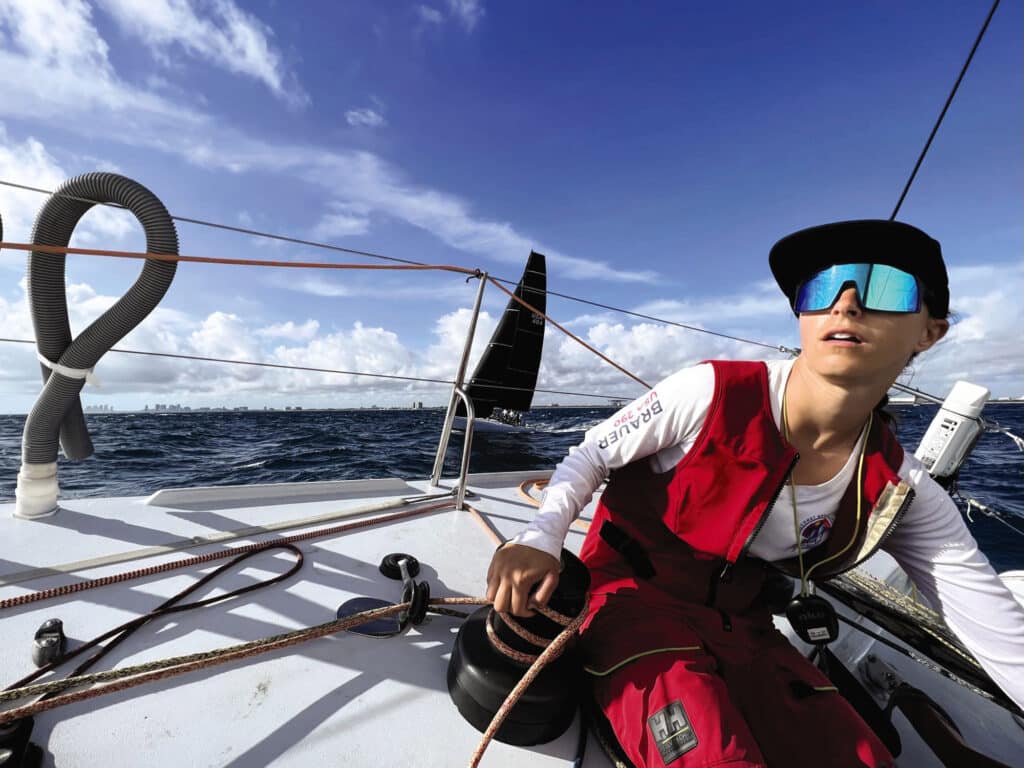
Three hours after the start of the Fort Lauderdale to Key West Race, Cole Brauer decides to switch up the game plan. “We can’t race the same way as everyone else because we don’t have a full crew,” she vents. “I have to remind myself of that.”
For the past 20 miles, Brauer and her teammate, Cat Chimney, have been short-tacking the Class40 First Light down the Miami coast to avoid the Gulf Stream, which travels north at 4 knots. With a southeasterly breeze building offshore, they must balance current relief with stronger wind offshore, choosing when to tack toward the beach and when to head out for fresh breeze. But with every tack, the competition increases their lead. Class40s aren’t known for stellar upwind speed, and the fact that Brauer and Chimney are doublehanding only makes the maneuvers slower.
“The conditions aren’t the same for everyone all the time,” Chimney responds. “I’m happy for a split here if that’s what you want to do.”
This is the duo’s first race together, and they are still getting a feel for their roles on the boat. Before today, the two had cultivated a strong professional friendship racing against each other in Class40s, often helping each other fix things before the starts of big races. A few weeks before the Fort Lauderdale to Key West Race, the Magenta Project sent them to a training session on the Canadian Ocean Racing Team’s IMOCA 60, and they instantly hit it off as teammates, deciding then and there to do more doublehanded racing together.
“All right, let’s go for a tack,” Brauer says. “We’re not going to gain by following.”
They set up at the back of the boat, with Brauer breaking the jib from her seat at the helm and Chimney trimming the new sheet on the other side.
“OK, autopilot is off,” Brauer says, clicking the remote-control puck strung around her neck.
“Three, two, one, tacking.”
The boat’s bow swings through the breeze, and soon enough they’re headed out to sea. “Nice tack, Cat,” Brauer says, settling the boat onto its new heading.
For Brauer, this race is the latest development in a relatively short career in pro sailing. At 100 pounds and 5-foot-nothing, Brauer is a small person with big aspirations, yet what she lacks in size she makes up for in grit. Beginning as a boat captain, the 28-year-old has become a fixture on various sailing circuits, from distance racing to Etchells, J/70s and Melges 24s. In some ways, she’s a typical sailing bum, living in a built-out van so she can go where the wind and the gigs take her. Her career has already had many twists and turns, and she has big plans.
Brauer came late to the sport as a walk-on crew at the University of Hawaii. “I remember when I got to that first practice, people were surprised I was a girl because of my first name,” she says. “By then I was used to it, though. People still think I’m a boy if they haven’t met me in person. It’s common in this business.”
After graduating as a three-time scholar athlete with a degree in food science with a focus in medicine, medical school seemed like a logical next step. But the 2018 Pacific Cup sent her down a different path. “It was my first big offshore race ,” Brauer says, “and when we got within 25 miles of shore, I got a blip of cell service, called my mom, and told her I wasn’t going to med school. I was going to go sailing instead.”
Her parents were less than stoked about their daughter abandoning a medical career to bum around on boats, but Brauer stuck to her decision, spending the year after graduation as a detailer, scrubbing teak with toothbrushes and making little money for it. “I was kind of on the struggle bus,” she says. “I could barely pay rent.”
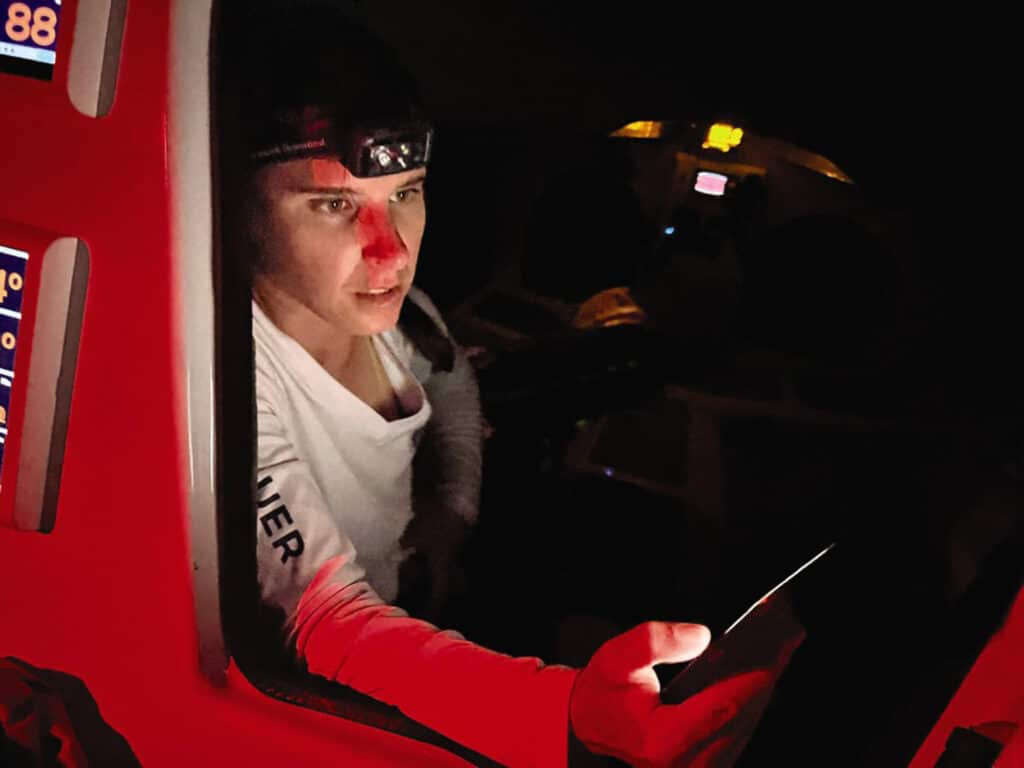
She moved back to her home port in Boothbay Harbor, Maine, to search for sailing jobs. She was coaching to get by when she met a boat captain named Tim Fetsch, who initially wanted nothing to do with her when she asked for an apprenticeship.
“I convinced him by telling him I was small. I fit into tiny spaces, and I’d do absolutely anything to get a job,” she says. After a few weeks of steady badgering, Fetsch relented and gave her a job working on a Swan 42, her first bit of real nipper work. She took up every task thrown her way, cleaning bilges so well you could eat off them, whatever she had to do to make sure she was going to have a job the next day.
Fetsch worked for the US Merchant Marine Academy Sailing Foundation, where he managed about a dozen boats for charters and racing. Brauer started going up and down the East Coast doing deliveries on random boats, from Melges 32s to 80-foot racer-cruisers. “Usually when you’re a nipper, you’re only working on one boat under one captain,” Brauer says. “And now I was working under one boat captain, but we had a bunch of boats that we were working on.”
Fetsch taught her everything she knows, from engines to electrical. He made her install her first 110-volt outlet on a Swan 66. He taught her to see every day as a tryout and to never get too comfortable in her position. “He was brutal,” Brauer says. “But he made sure I stayed honest, made sure I worked hard and never got cocky. Looking back, Tim is the best thing that’s happened to my career. I still use those lessons today.”
Brauer worked for Fetsch for a year and a half. One day, they were walking through New England Boatworks in Portsmouth, Rhode Island, when Brauer spotted a sorry-looking Classe Mini 6.50 sitting on a trailer beneath a tarp in the boatyard. By then she’d been itching to get into singlehanded racing. She’d done some doublehanded offshore sailing in Hawaii, and she’d been doing doublehanded deliveries with Fetsch, but she wanted to take things to the next level. The Mini turned out to be a Foundation-owned boat, so she asked Fetsch if she could fix it up and campaign it.
Once again, he brushed her off, but Brauer remained persistent. Eventually, she finagled a deal with Warrior Sailing, also run through the USMMA Sailing Foundation, to refit the boat to take veterans out to learn the ropes of offshore sailing. “I don’t know if [the people at the foundation] completely believed I could do it,” Brauer says. “But they were like, ‘We’ll give her this boat and see how she does. She’ll probably give up eventually.’”
But Brauer didn’t give up. By then she’d started to have this insane idea. No American woman has ever raced singlehanded around the world, and she began to think she could be the first. “I get into a rhythm when I’m singlehanding,” Brauer says. “Everything just flows, and it works. I feel the boat, and the boat feels me. We kind of work as one, so I’m never really alone because I have the boat there.”
Eventually, she got the Mini completely refit and ready to do some serious offshore racing. But two weeks before the 2019 Bermuda 1-2, the foundation pulled its support, even though Brauer had paid the registration. “That absolutely crushed me,” she says. “I ended up stepping away from the boat after that.”
As fate would have it, she’d met Mike Hennessey on the dock earlier that season. Hennessey owned a Class40, Dragon , and Brauer started doing deliveries for him when his boat captain quit. Straight away, she badgered him for the job. “I could tell that Mike didn’t want me to take the job at first. I was 24, and I was a girl, and I was small. All these boat captains were big, 250-pound dudes in their 30s.”
Like others before him, Hennessy relented, and the two have been working together ever since. That isn’t to say it’s been an easy ride, however.
There’s a special kind of romance attached to shorthanded ocean racers, often viewed as brawny lone-wolf cowboy types who, for whatever reason, choose to battle their demons alone on the ocean rather than face them on land like the rest of us. Brauer doesn’t fit this mold. She’s good with people, even though she’s better with boats. She isn’t brawny by any means, and in cases where some men might force a repair or rigging job with brute strength, Brauer makes better use of her brain.
“You’re always going to have a tool, even if it’s the wrong tool,” she says. “Sometimes I’ll use a winch handle instead of a screwdriver if I have to.”
She plans her day to the minute, not the hour, and every task she does has a procedure, usually sketched out in long and detailed lists. Her life is not about gazing at sunsets or counting shooting stars, but about engines and electrical, and hauling sails around with halyards because she isn’t physically strong enough to do it by hand. It’s about climbing into the rudder compartment when the autopilot jams and pressing her back against the bulkhead to wriggle loose the ram from the tiller bar while the boat lays over with the kite still up, then having to go back on deck and wrangle in the pieces of a freshly broken tack clutch without getting her teeth knocked in. It’s about sitting in a harness with her legs falling asleep because she has a job to do up the mast, fighting the urge to let herself off the hook and go back down because there’s no shot she’s climbing back up to do it later, not when it’s blowing 20 knots with zero-degree temperatures. It’s about knowing that whatever comes her way, no one is there to save her if she fails.
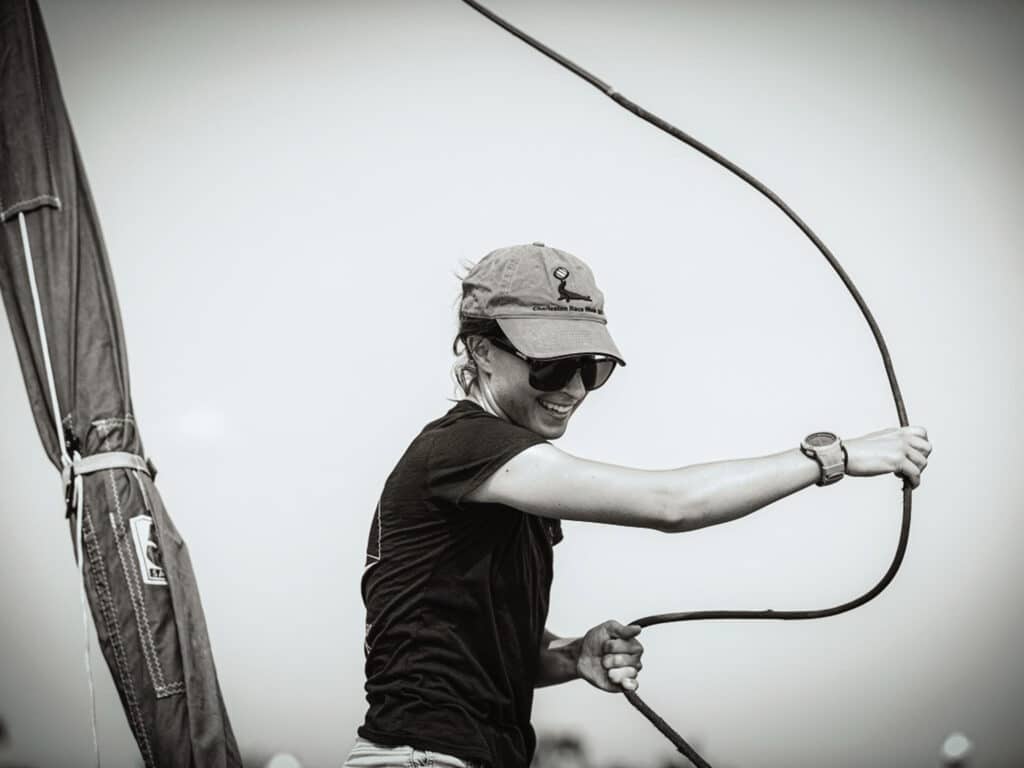
All these lessons came into use when Brauer and Hennessy lost their rig in the 2022 Caribbean 600. They’d installed brand-new rigging before completing the eight-day delivery to Antigua, but “the problem with brand-new equipment is you’re going to have teething pains,” Brauer says. “It’s the same with a brand-new engine. You have to stop every few miles and make sure everything is working properly. You trust but verify, and in this case, I didn’t verify.”
After rounding St. Barts during the race, Brauer went below to rest before she planned to hoist the Code 5. She thought they’d hit a weird wave when Hennessy began yelling, “Rig down, rig down!” Before going below, the sun was behind the mainsail, but when she glanced topside, the shade had completely vanished. When she came up, the rig had toppled over to one side. They lashed the boom to the boat and tried to get the main down, but Class40 mains have luff cars and full-length battens. The only way they could have taken it off would have been to get in the water and unwind the battens. Jumping into the ocean was not an option, and the sound of carbon and fiberglass crunching became debilitating. Brauer had never heard anything like it, and to this day, it is the worst sound she’s ever heard. When one of the winches they were using to keep the mast in the boat started pulling off the deck, they knew they were running low on options.
“Mike and I made the quick decision that we were going to lose the rig,” Brauer says.
The two began cutting halyards and unpinning side stays, trying to save anything they could salvage. “I had gone over my safety procedures for so long,” Brauer says, “so I knew where the bolt cutters were. I knew where the knives were.”
Brauer had to hit the last turnbuckle with a hammer when it got to the final thread, and after cutting more lines, they picked everything up and threw it overboard.
They’ve rebounded in a big way, however. Hennessy ended up replacing everything and getting Dragon race-ready before deciding to build a brand-new Class40 to race in France this summer. He sold Dragon to Frederick K.W. Day, owner of the Class40 Longbow, who renamed the boat First Light. Day still allows Brauer to race it as their sparring partner, with the Fort Lauderdale to Key West Race serving as their first outing together.
By the time Brauer and Chimney reach the finish, the sun has been up for two hours. The two didn’t end up finishing as strong as they’d hoped, but the main goal for this race was to arrive in one piece and see how they vibe as a team. In that sense, the test was successful, and morale is high as they tie First Light to the dock.
“What Cole is doing is really unique for her age,” says Chimney, who is eight years her senior. “She’s come into this at a really important time for women in sailing, and she deserves a lot of respect for leveraging it the way she has. These opportunities weren’t available or the culture wasn’t right when I was her age doing similar things.
“Everybody navigates pro sailing in different ways,” Chimney continues. “There’s no science behind it. It’s not like you go to college for four years and come out with a career-track job. It’s all about putting yourself in the right place with the right people and doing the best you can, and I think Cole is crushing it in that sense.”
Although she’s got some sweet gigs for the time being, Brauer has her mind set on a solo circumnavigation. She has a designer in mind to one day build an IMOCA 60 to fit her size, and in the meantime, she’ll use the Class40to rack up miles. She will continue to ignore those who doubt her because deep down, only she knows what she’s capable of. She could have taken a different path, could have gone to medical school and worked a nine-to-five, could have lived in a house instead of a van. But there’s a moment she is constantly pursuing, a moment she relishes. It’s those first few seconds after making the correct decision to do a sail change, when the wind does what it’s supposed to and the boat picks up speed, when the sail fills and the autopilot catches and the hull surfs down a wave. This is the feeling she’s chasing. This is the place she calls home, and home is wherever the wind and determination will take her.
- More: Offshore Racing , offshore sailing , Print March 2023 , Racing , Sailboat Racing
- More Racing

Start-Box Sparring in Barcelona on Day 2 of Preliminary Regatta

Real-time Wind Overlay Feature Added to Cup Broadcast

Open Day Revelations for Cup Teams in Barcelona

Fletcher In, Scott Out with INEOS Starting Lineup Annoucement

Cruising Cat Racing Franco Style

The Marvelous AC75s On Deck
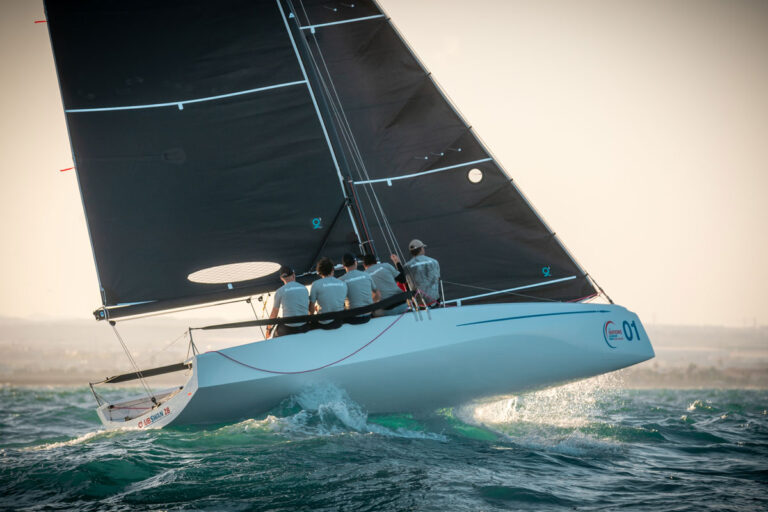
Sporty and Simple is the ClubSwan 28

Alinghi Red Bull Racing Suffers Second Mast Failure

- Digital Edition
- Customer Service
- Privacy Policy
- Terms of Use
- Cruising World
- Sailing World
- Salt Water Sportsman
- Sport Fishing
- Wakeboarding


Class 40 Sailing: First Impressions
- June 2nd, 2016
- Sailing Yacht
Now that some 4 weeks passed by since I´ve had my fist real offshore sailing experience with a Class 40 sailing yacht and with having gained some distance to that trip I am trying to sum up my experiences and bundle testimonies of my fellow crew mates to have a thorough review of what it is like to sail a Pogo 40. You may read the cruise report of the first leg here and of the second leg under Gennaker here .
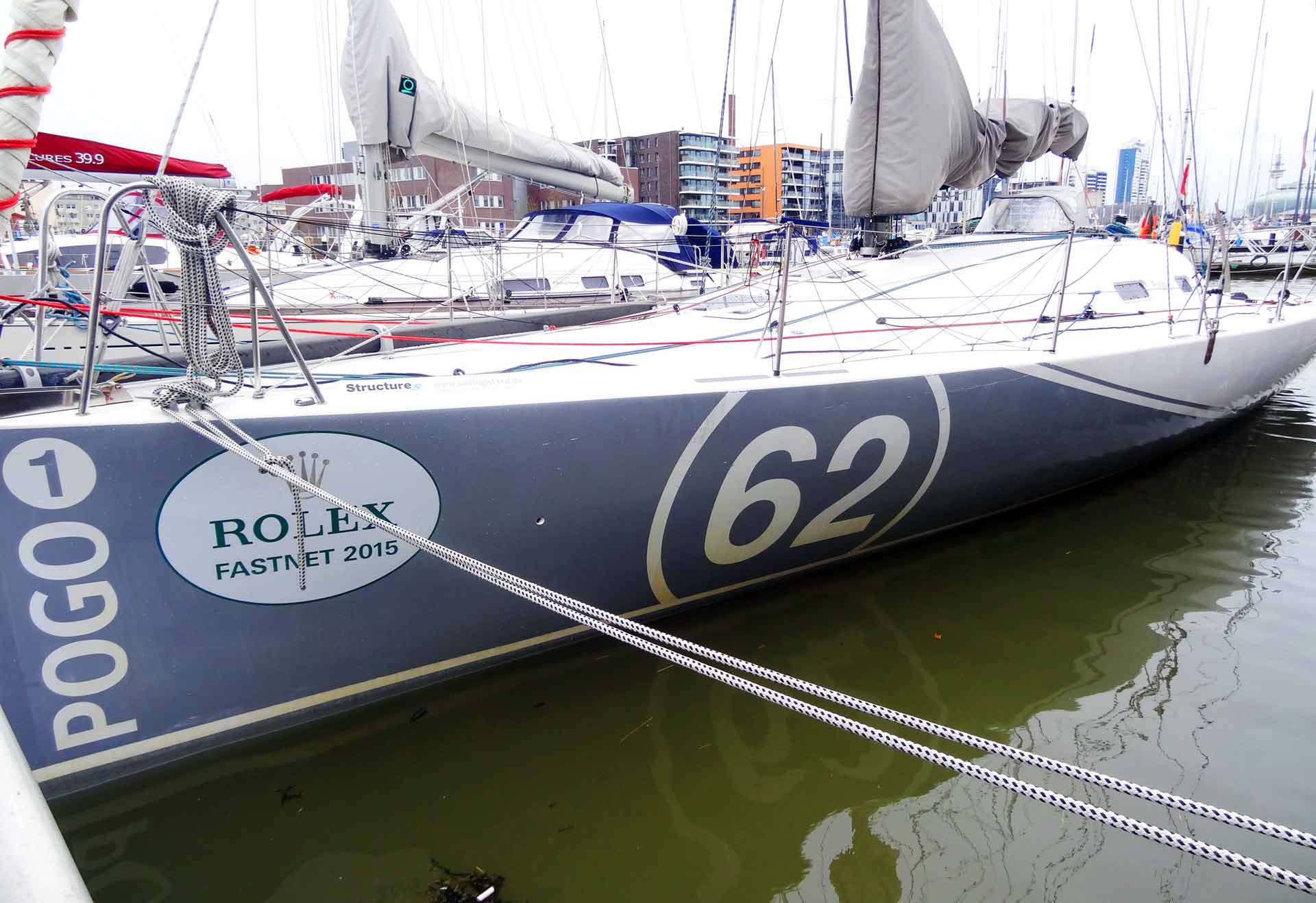
First of all: Looking at the boat is an experience by itself. Being accustomed to the view onto classic yachts, seeing this compact, flat hull with its extra-wide stern is amazing. This hull seemingly promises to go fast by its looks alone. My heartbeat went faster upon arrival at the mooring and it was the same with the other crew members. Let´s board the ship and have a look around.
Rigging and Cockpit Layout of a Class 40
A Class 40 is made for single handed and double handing racing. That means first of all that all ropes and lines must be guided in a way that they could be worked upon from the cockpit. Which is done beautifully in the Pogo 40: All halyards run down within the massive carbon mast or over the cabin roof and through jammers and can thus easily be unlocked, brought on to the winch and worked with. Only for hoisting and reefing of the mainsail somebody has to proceed midship to the mast.
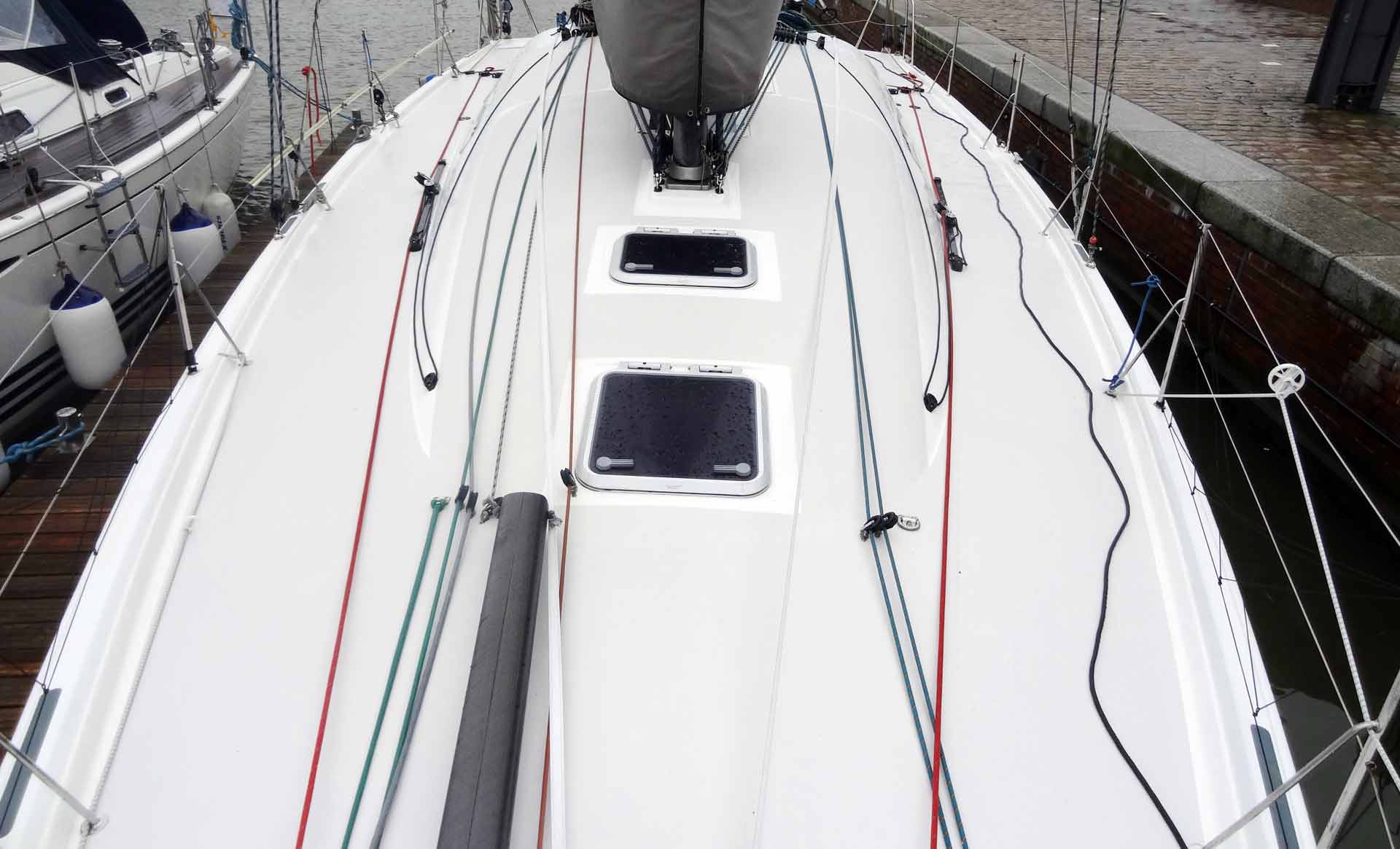
When sailing single or double handed – above all in race situations – maneuvers have to be carried out with speed. To assure this, everything has to be within reach of one person: And it is indeed! There is a sheet winch on either side of the cockpit, well within reach with the one mainsheet winch on the center-housing for the life raft. This winch can operate both sheets of jib and Genoa as well as the backstays which also run through spinlocks.
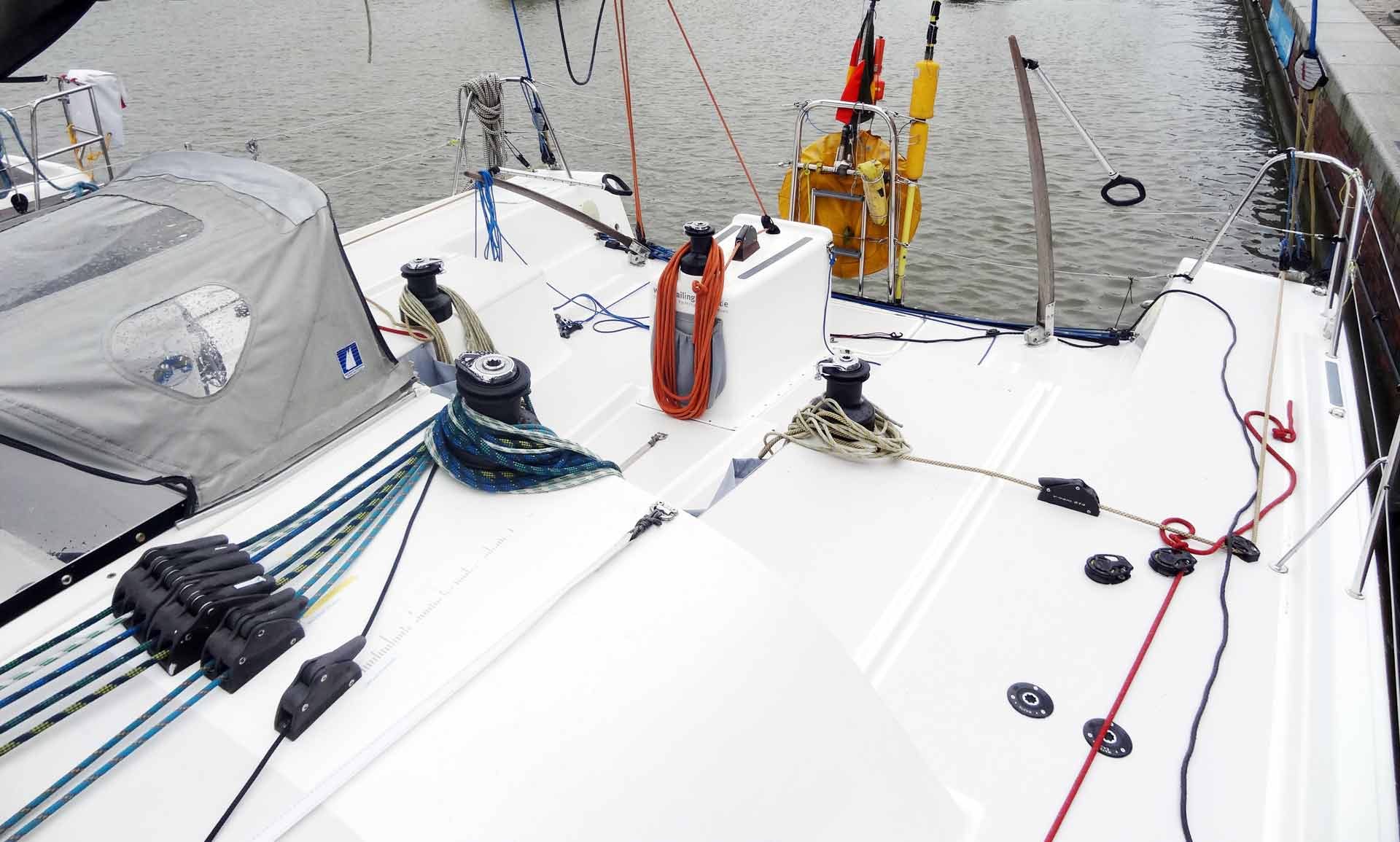
Traveller sheets end in spinlocks right vis-à-vis the mainsheet winch. So, in theory a lone sailor could handle all the running rigging alone. Which of course is proven by a dozen of single hand sailors on Class 40 yachts all over the oceans. Although the cockpit is with its 4.50 meters extremely wide, ways from winch to winch and to the tiller helms are very short. The timeframe from changing conditions to a reaction can thus be made very short.
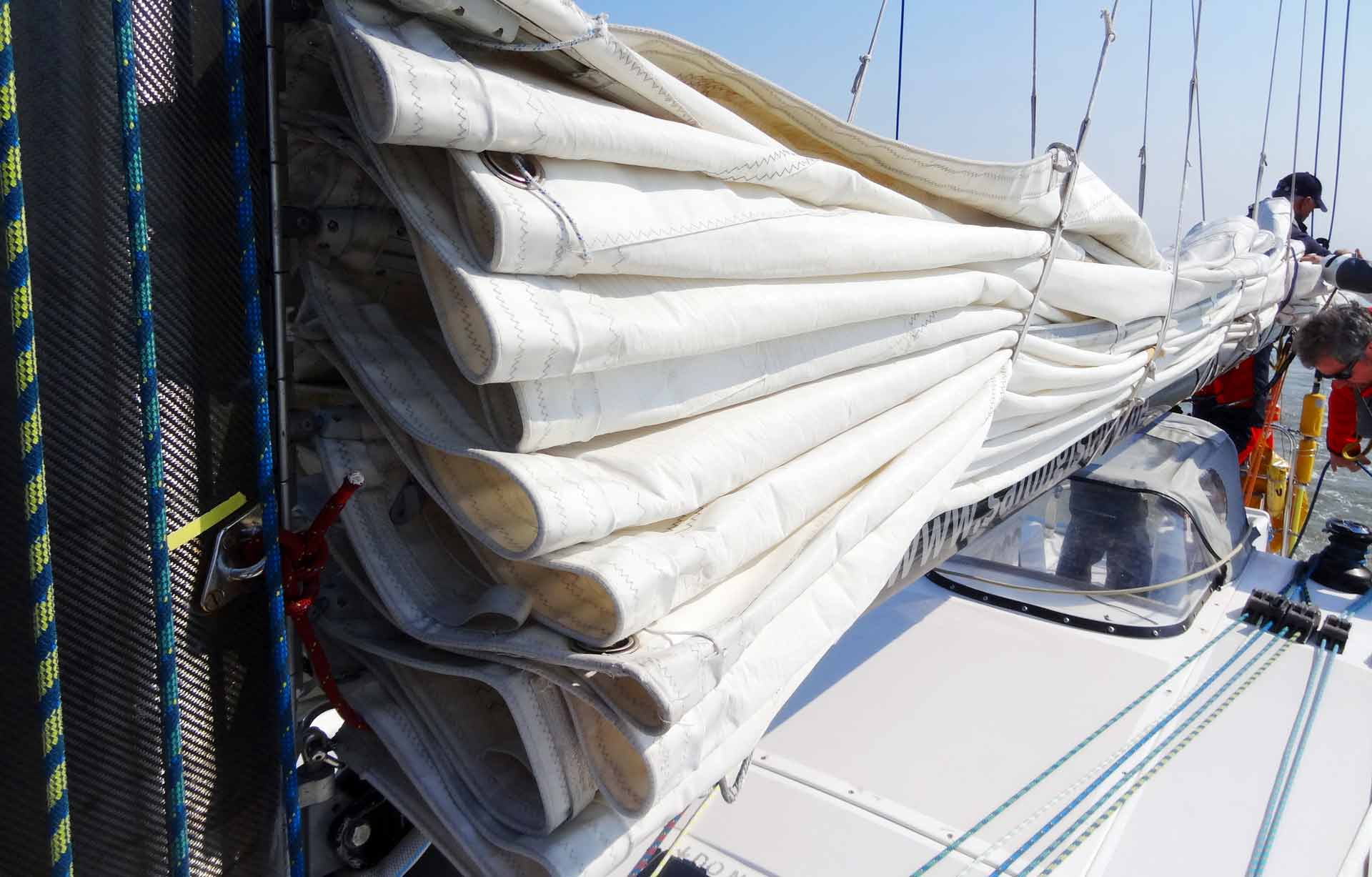
Of course, our Pogo 40 was equipped with Lazy Jacks to have the ritual of taking down the main sail made as easy as possible, though I can state by my own experience that both hoisting these 70 square meters of canvas and taking them down properly was extremely hard work: I can barely imagine doing this all alone. Thank god electric winches are invented. I felt at home in our Pogo´s cockpit and after a few hours manning the different stations was a no brainer. Again: Being responsible for the whole ship alone should be trained very thoroughly. A Class 40 is far away from being a no frills boat control wise.
Class 40 Sailing: Fast Planing like a Rocket
That was something I was looking forward to the most when booking a cruise on this boat. After having done the interview with Sven, co-owner of SY KNUBBEL, a Pogo 12.50 (which can be read here ) I was impatiently waiting for that sensation when the hull does overcome the boundaries of the wave system and sails faster than her theoretical maximum hull speed. So, all hands on deck, hoist all sails-ho! And tell me now what´s this planing like?
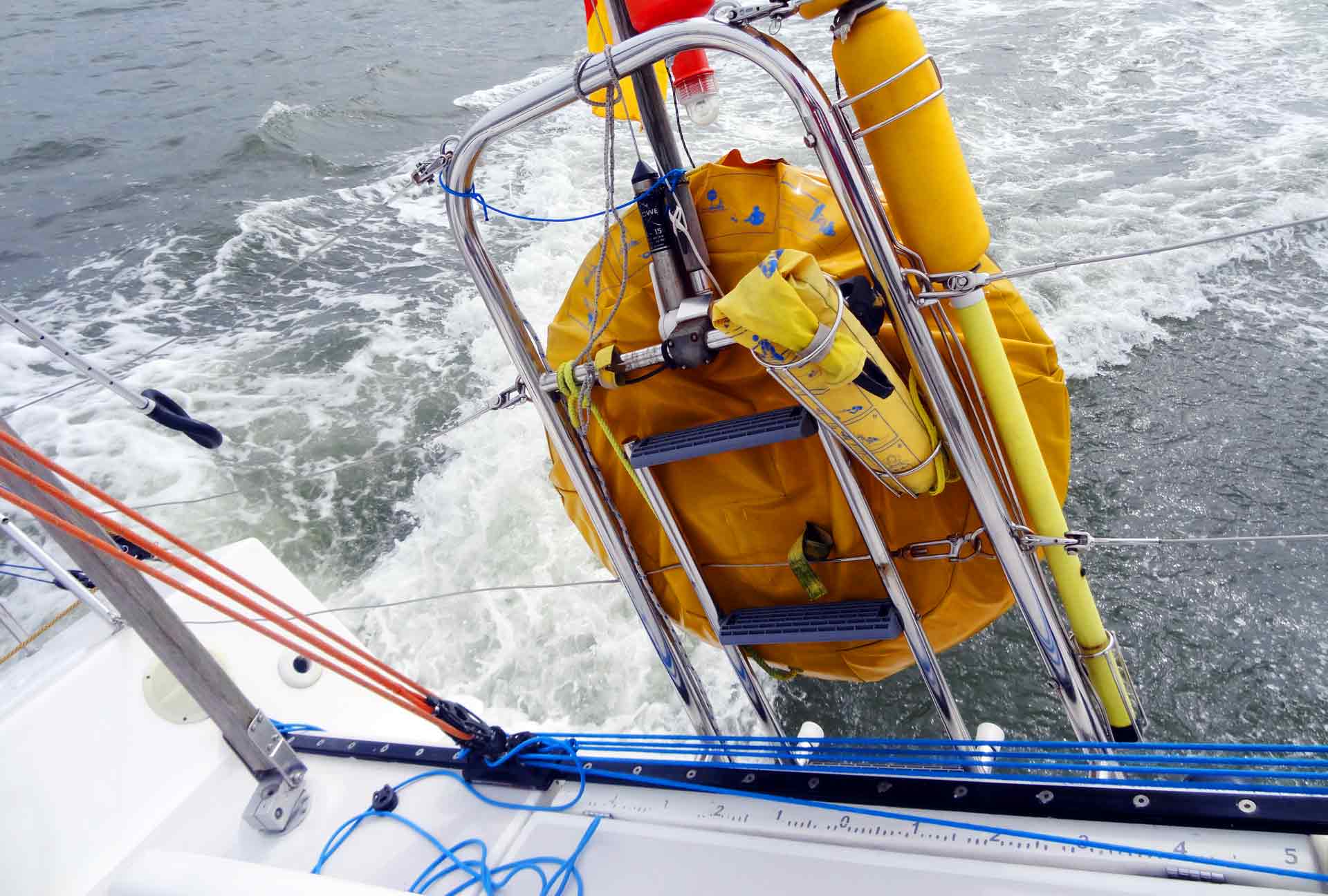
“Planing is when this constant gurgling and bubbling at the stern suddenly stops and is substituted by a smooth Swoosh….- like sound”, tells Sven when I was asking him. Sitting at the helm of POGO 1 beating upwind with 11 to 12 knots I am shouting to the skipper: “Capt´n, at which speed will she start planing?” “We already are – it needs 8 knots”. And yes, looking aft in our wake I notice a white trail indicating the gliding of our hull. It´s just an awesome feeling!
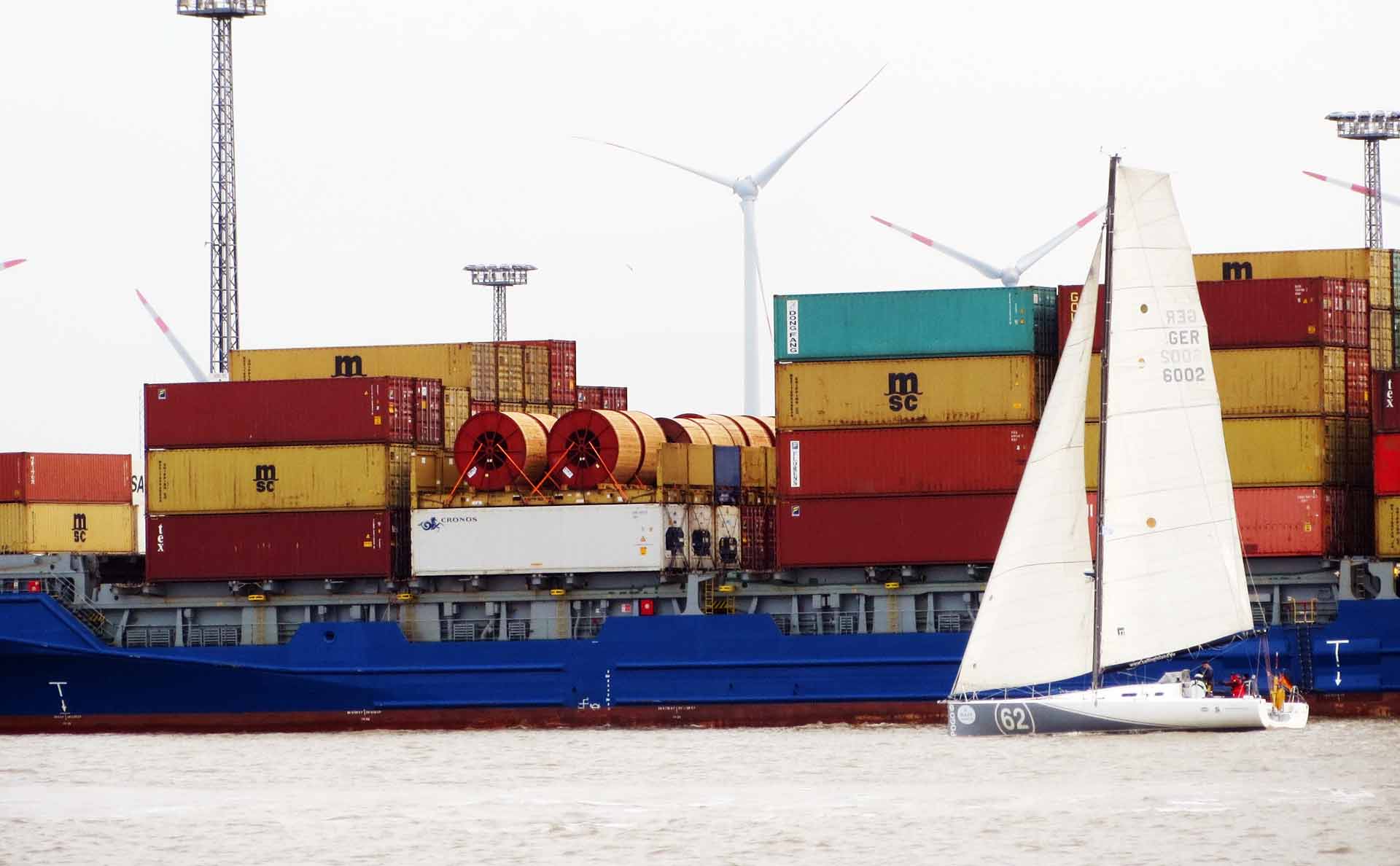
Maintaining control over the ship´s bearing is easy: The Pogo 40 is equipped with twin rudders in such an arrangement that even when heeled extremely the lee-rudder will have full steering capabilities. There was never too much pressure on the rudders though we didn´t have had to cope with too severe gales or swell conditions. It felt quite easy to trim her course by giving rudder – she reacts very vivid and instantly to even smallest corrections. Steering whilst planing? No difference to the classic way of sailing.
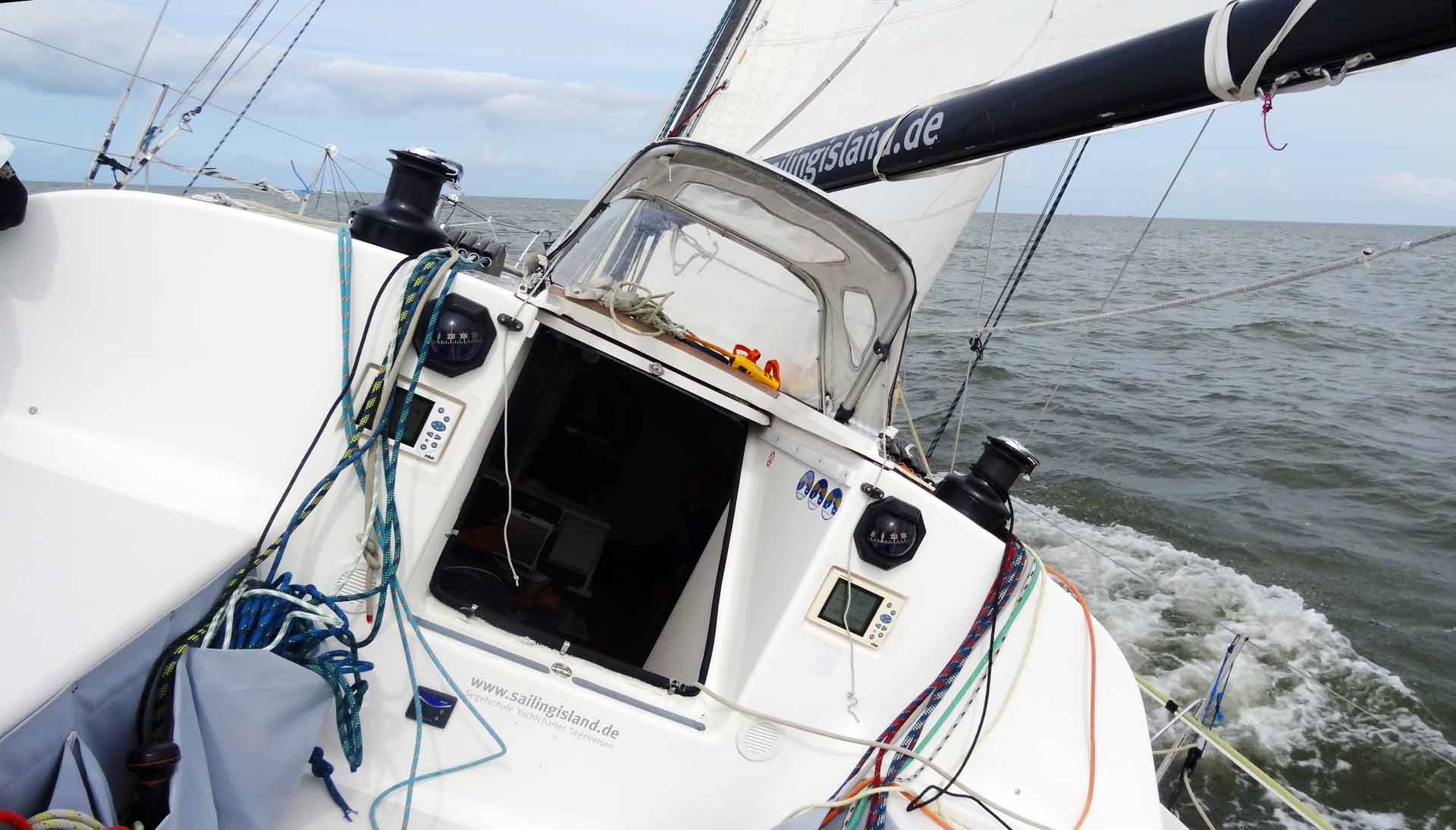
Speaking of heeling: The Pogo 40 needs heeling. This process assures the exposure of a smallest possible wetted surface under water thus reducing resistance. She sails very stable even when heeled extremely to up to 40 degrees and I never had the impression of being unsafe. Roaming about on deck when heeled is tricky: It´s wet and slippery, there are ropes virtually everywhere and – when sailing with a crew of five – even a 4.50 meters wide cockpit can easily become cramped.
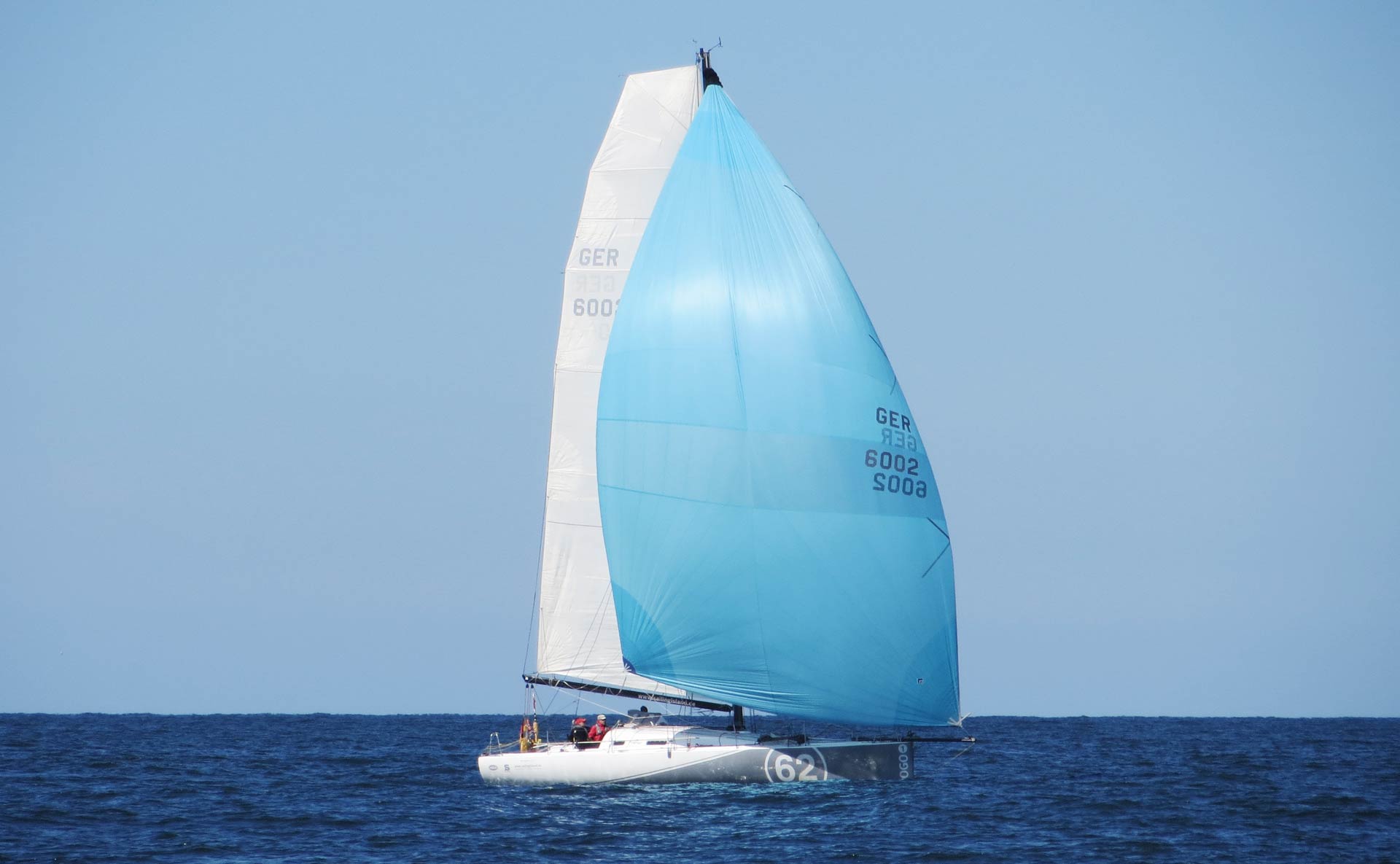
A truly unique experience was sailing under Gennaker (which can be read in detail here ). The Class 40 is trimmed to go downwind – and she will go as fast as hell! Fastest speed on our POGO 1 in light conditions has been 14 knots, our skipper told us of occasionally exceeding speeds of 20 knots easily. Again: This is a racing machine and riding this stallion must be done only by experienced skippers and crews. She´s definitely not a boat for the rookie.
The Beauty of Sailing a Class 40
Nevertheless, counting myself to the rookie side and looking at how my fellow crew mates managed their jobs on board – all of them with far more experience in sailing than me – with a good skipper sailing on a Class 40 is both exciting, full of adventure and thrilling on the one hand and filled with beauty and grace on the other. Seeing the Class 40 under all canvas, accelerating to full speed and starting to plane filles me with pure joy.
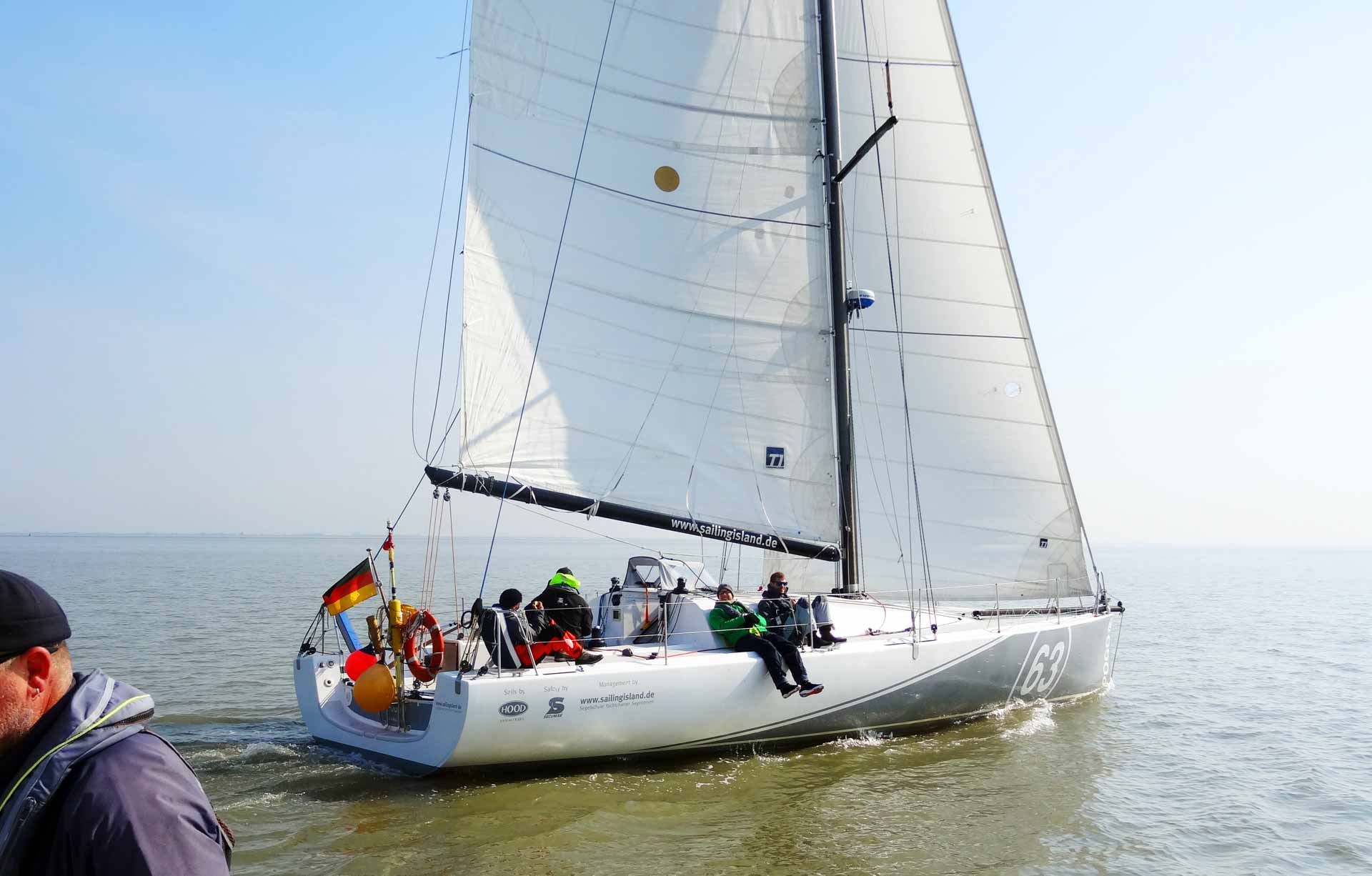
It is barely imaginable that any sailing vessel can sail faster than these kind of boats. I was puzzled when we were overtaking another sailing yacht going at full speed with engine in a matter of minutes, doing our 50 miles in less than 6 hours with light winds. Although it´s a frightening idea but I´d love to be sailing with a Pogo 40 when things get a bit rougher. Well … there are some cruises offered on the Pogo 40 in September. This do get rough in September … This yacht let endorphins flow to the liters, people do have a constant grin on their faces for it is extremely satisfying to sail on a Class 40. Going fast is satisfying: Who wouldn´t trade his VW Golf for a Porsche? I felt constrained to compare the beauty of these boats to the grace of the old square rigged Clipper ships, which might be a sacrilege, but thinking of it there are so much similarities to these fastest sailing vessels of forgotten times.
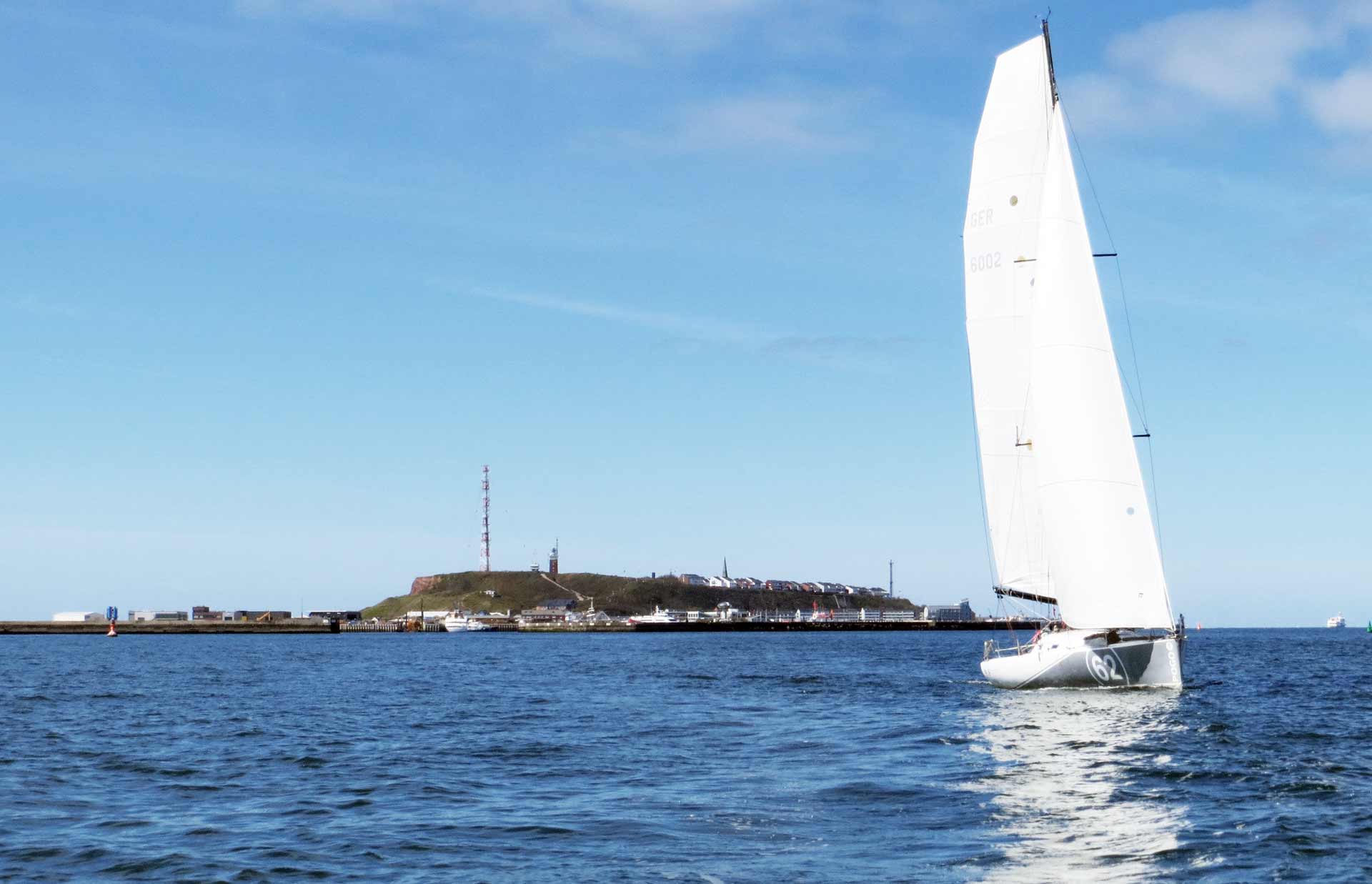
“She sails wet.”, said skipper Thomas when conducting the safety briefing. There was some water coming down the companionway indeed, but I read reviews of real tough regattas and saw pictures of saloons full of water, soaked cushion and no dry place left whatsoever. As well a frightening prospect, but hell, this must be an awesome experience!
Reviewing a Class 40 Interior
Down below a Class 40 like the Pogo 40 is a true miracle regarding space. She is a 40 ft. boat – I personally find 40 feet with more than 12.50 meters huge compared to my 33 ft. King´s Cruiser – but due to her extreme width of 4.50 meters internal space is just huge! Even with 5 adults leaving their berths, brushing teeth, searching for clothes and having a cup of coffee the saloon didn´t felt cramped at all.
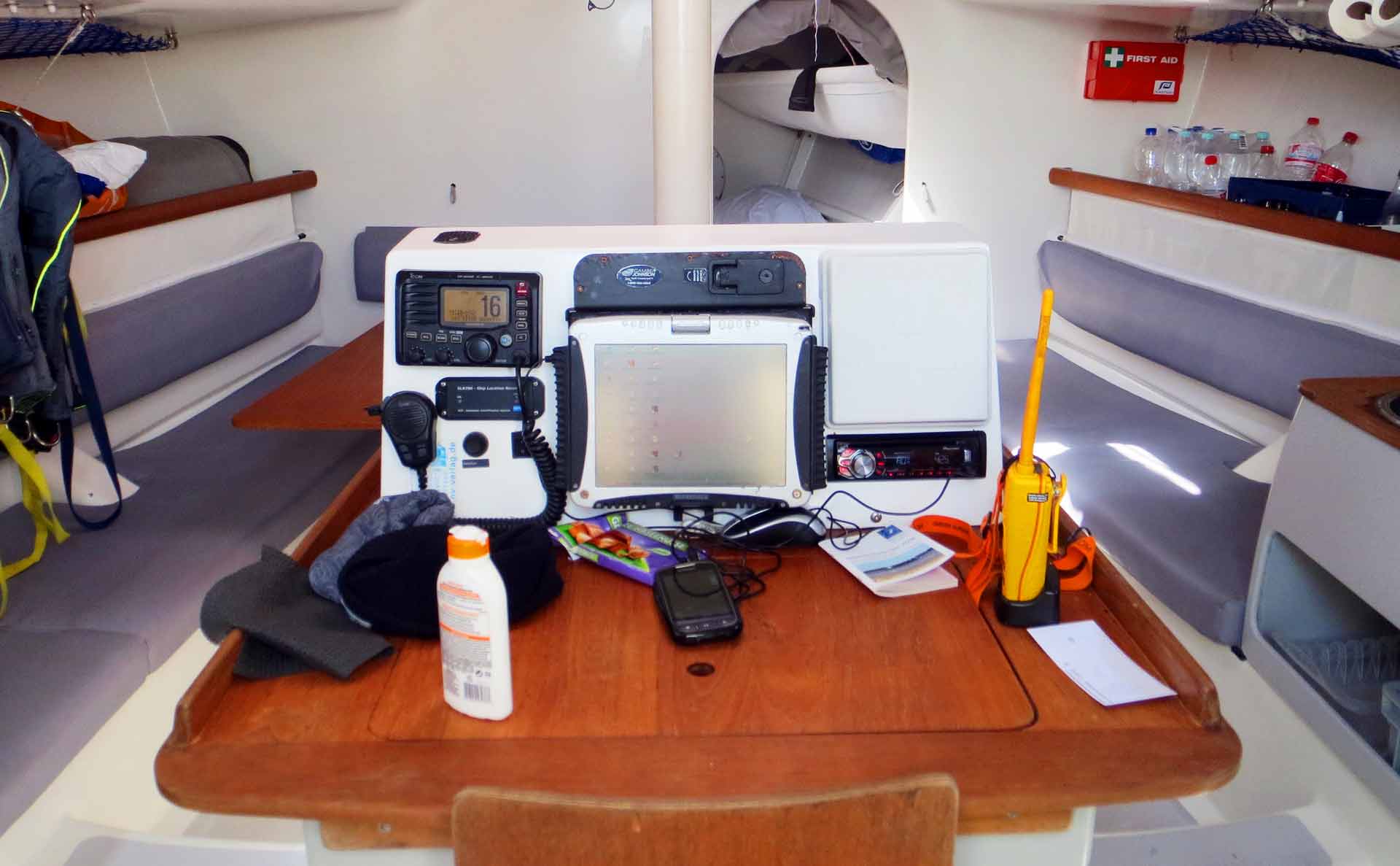
The main saloon is dominated by the large navigation station right on the keel in the middle of the cabin. A seat, a rugged laptop, radio and plotter – even by poking one´s head down the companionway all essential data could be grabbed at once. Down the cabin in the middle is a big fridge and the large folding table which makes dining even with a big crew easy.
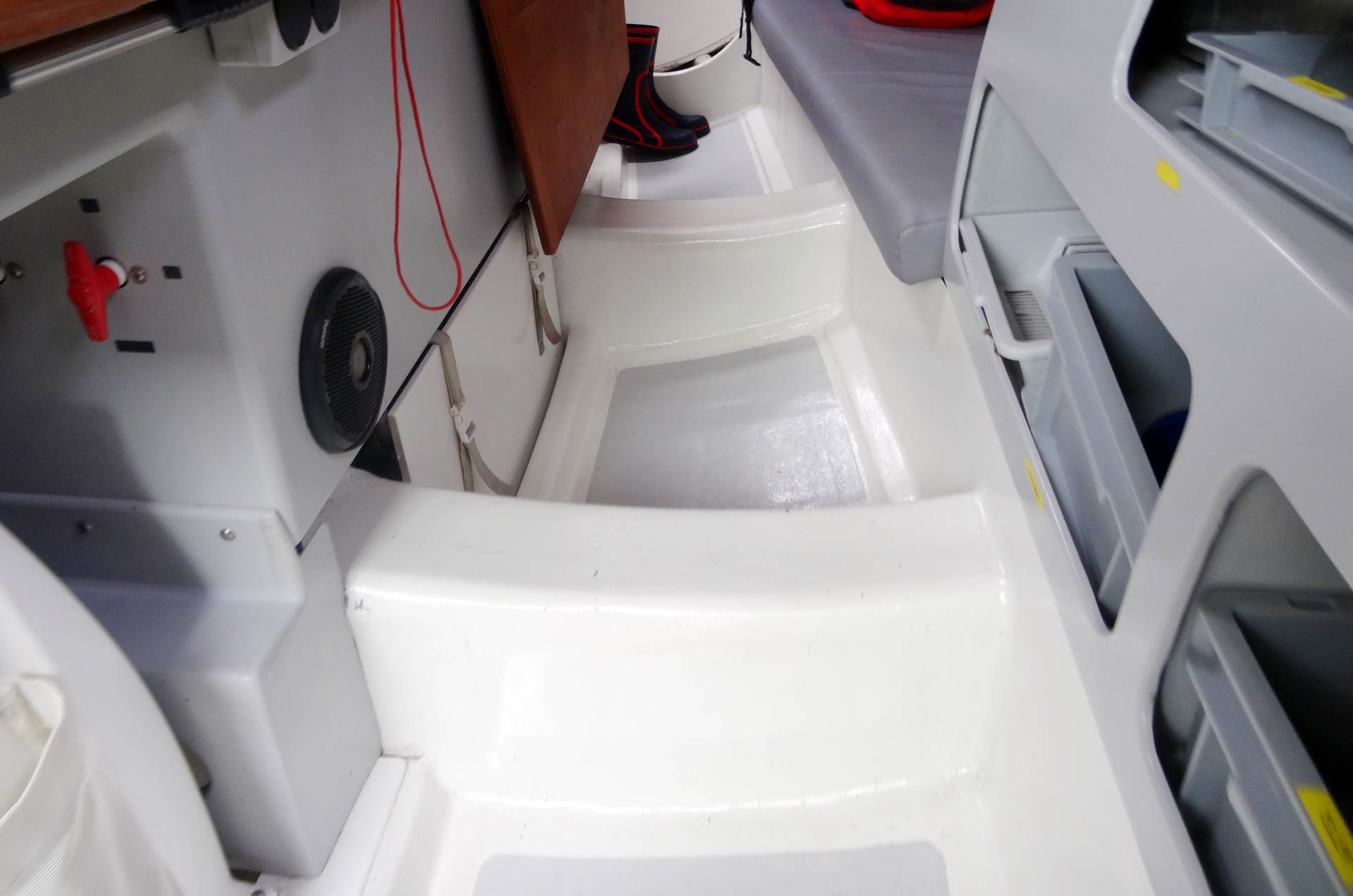
Due to the fact that this is a high performance yacht you shouldn´t expect panels or veneers: Even the massive structural stringers of the underbody structure is clearly visible. Watch your step! There´s an L-settee to the port side, a long settee on the starboard side right after the galley which features a two-fire stove, a large sink and working table.
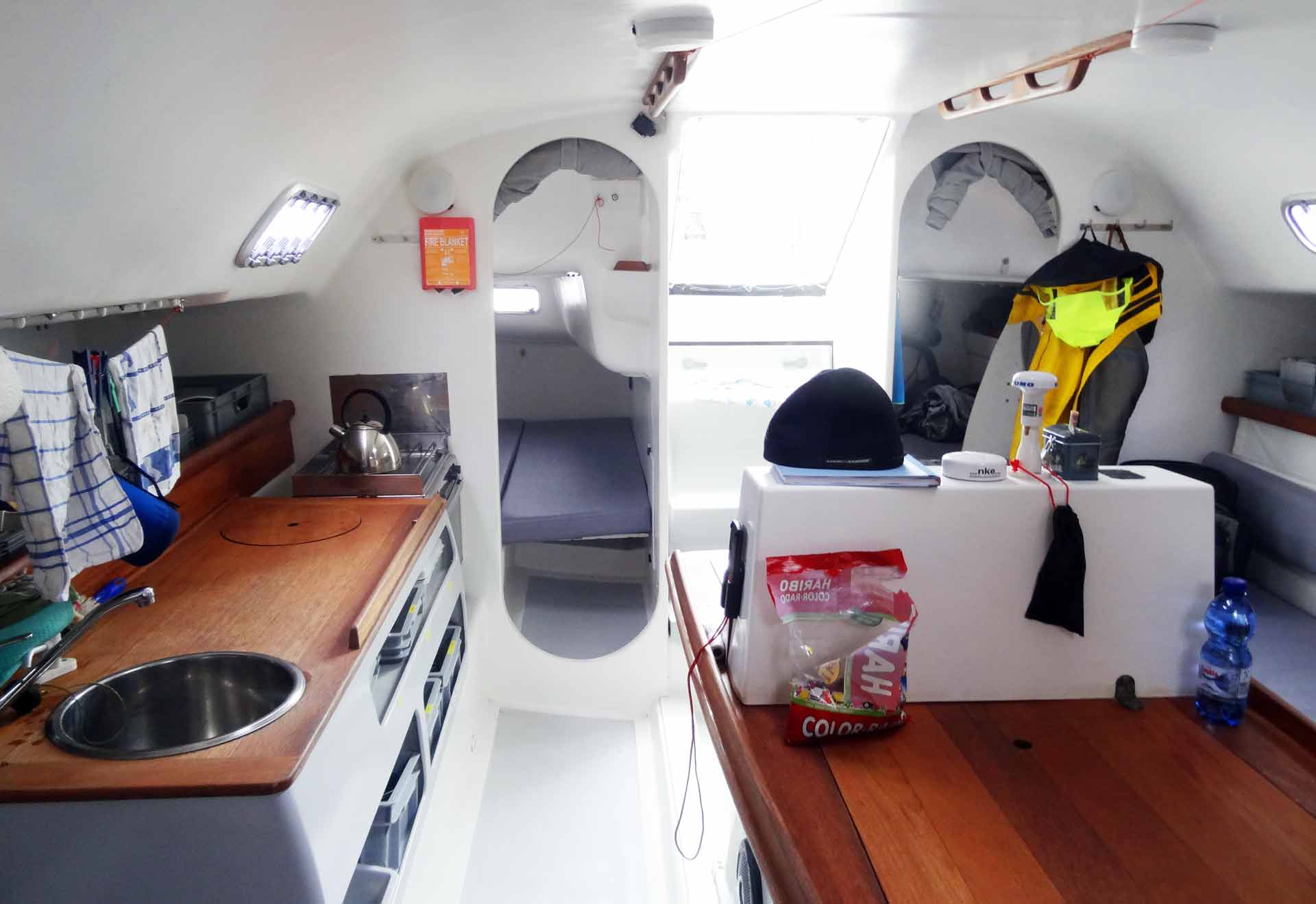
The Pogo 40 features two aft cabins of which the starboard cabin is large enough for two persons, the port cabin has a berth too is also filled with machinery such as heating, vents and pumps and the main power control. Here a more than bare head is to be found: One can seal off when doing his business by having a curtain applied, but again: No doors, no real visual protection and no sound protection at all. It´s a race – not a cruise …
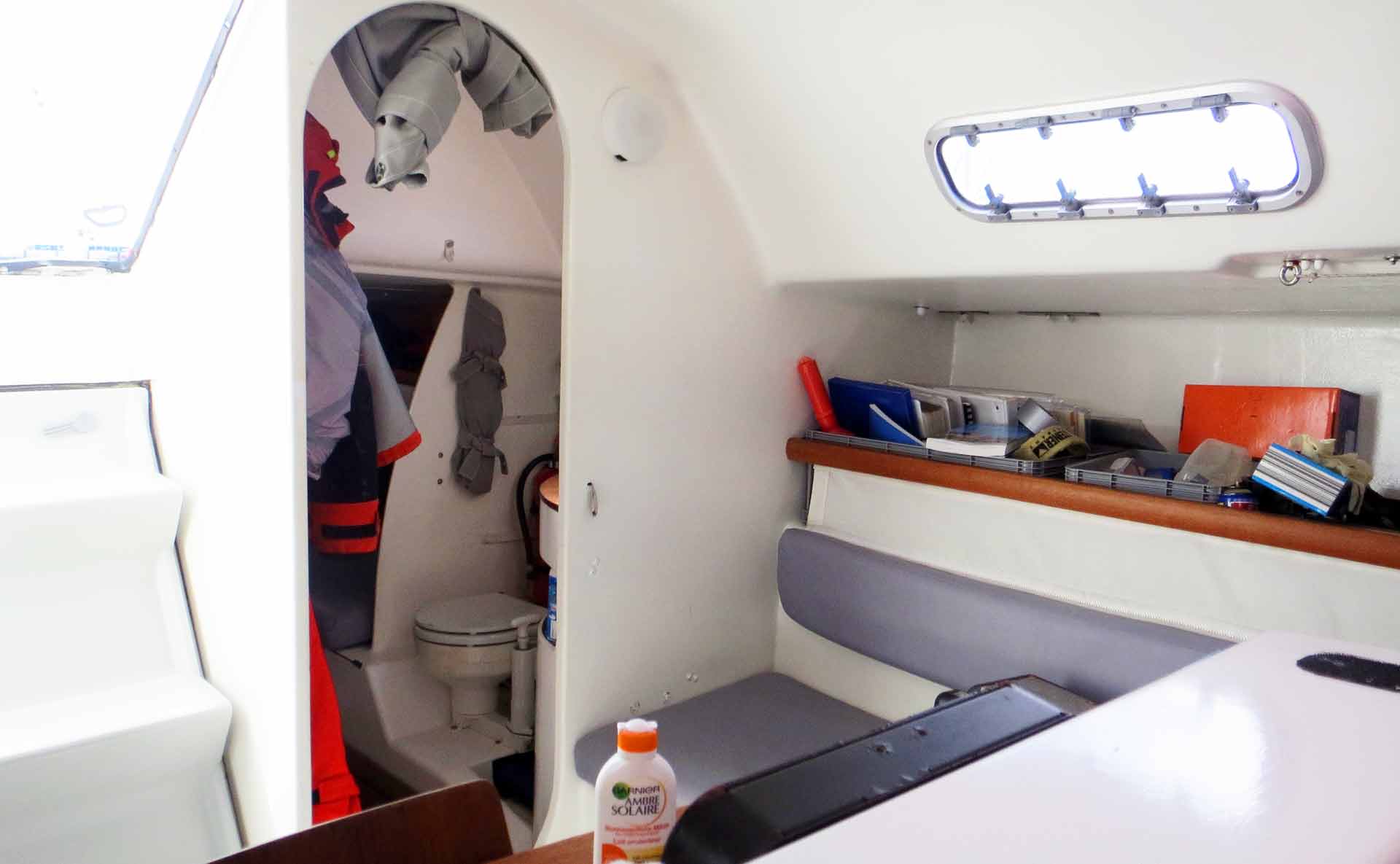
Next to these three possible berths there is more on the port side settees, two persons, another one on the starboard side and – whilst in port – the fore cabin could offer two additional berths. In the end, a crew of 8 persons could find a place to rest while on board but again, that´s just in theory.
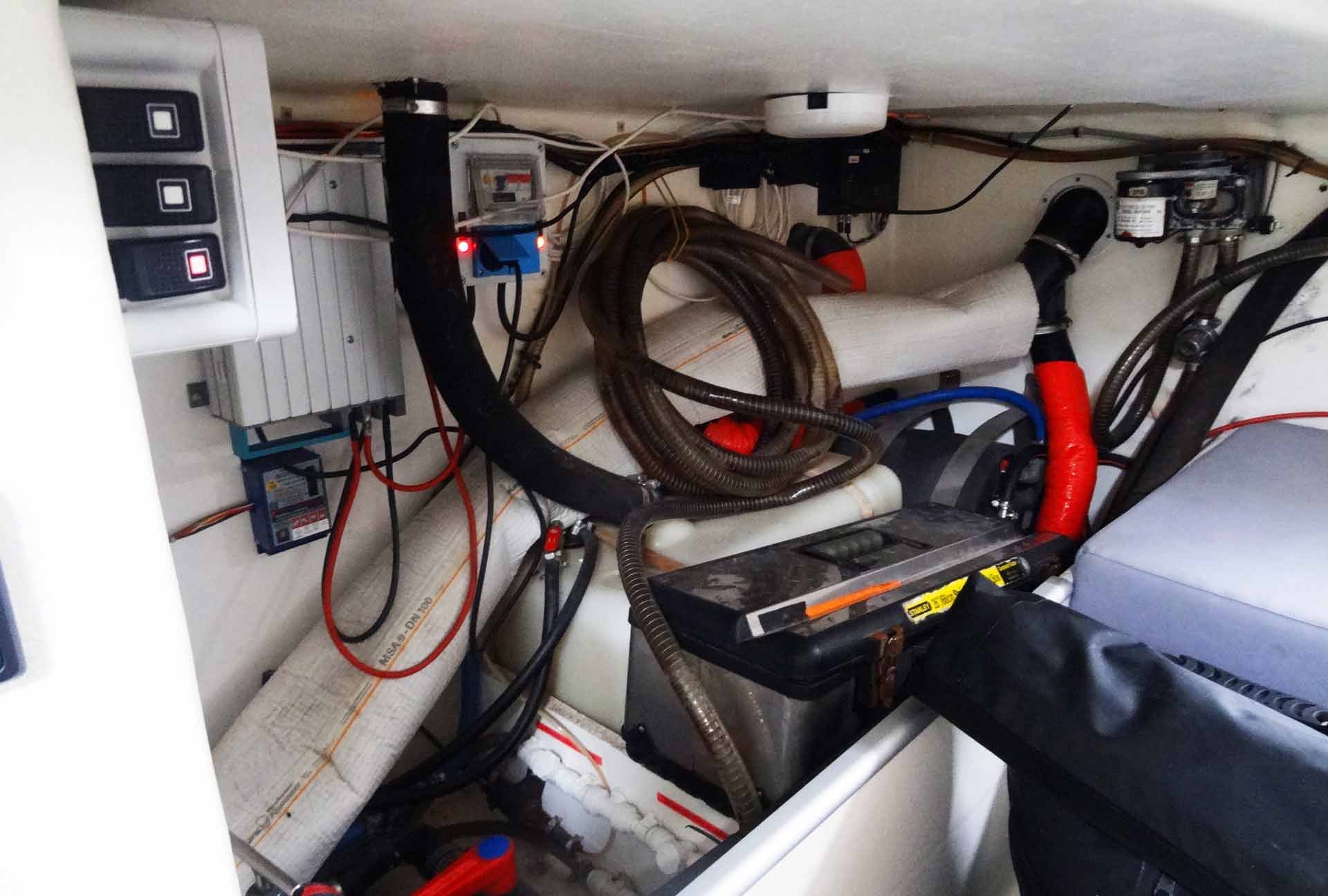
When we have been underway with five people – four crew and one skipper – we´ve had two of us in the forepeak, me and another member in the aft cabin, skipper and the last crew member in the saloon berths. Though I didn´t slept on any of the other bunks, I guess I have been lucky indeed having won a berth in the comfortable aft cabin.
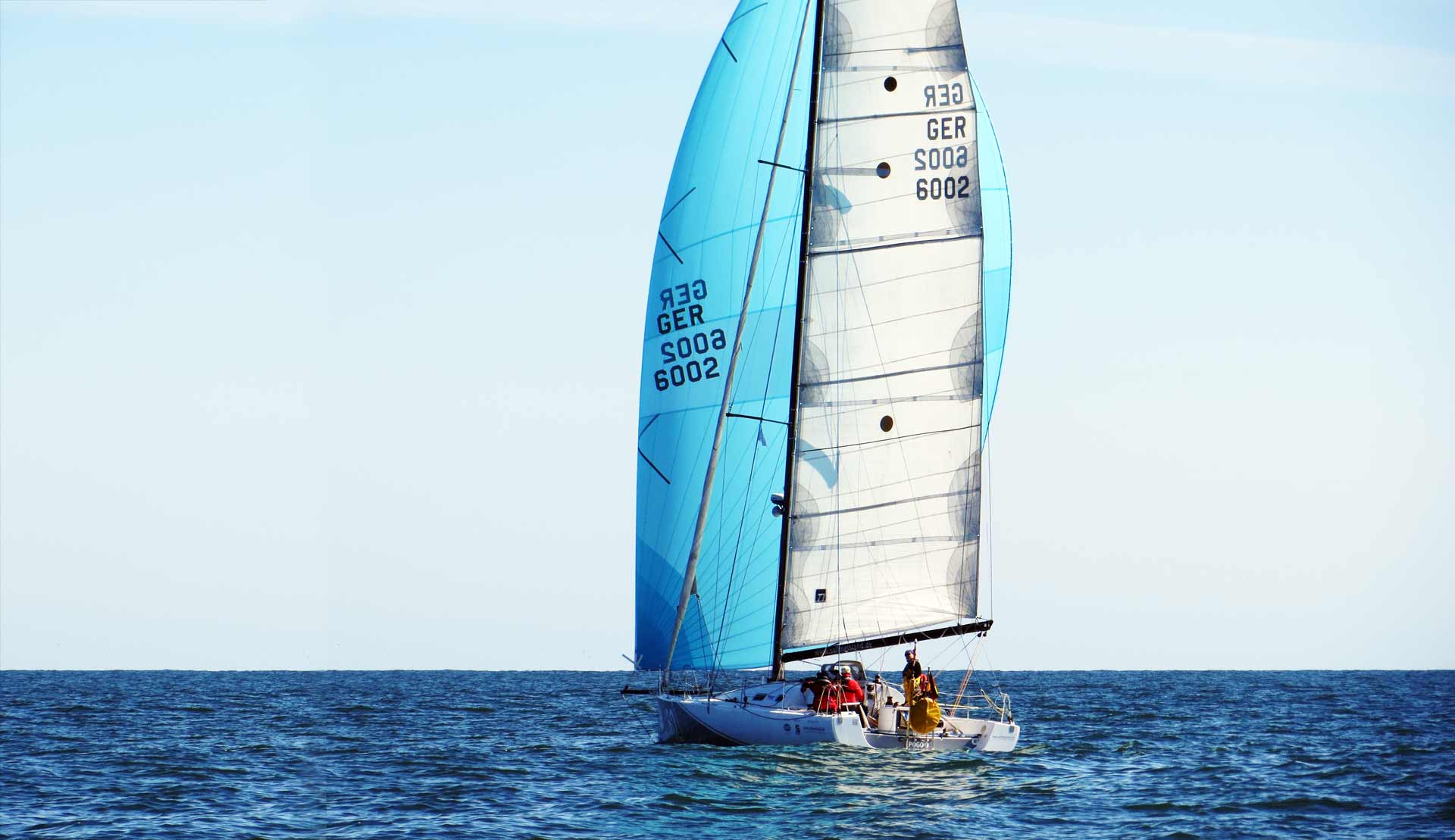
To sum it up: The interior won´t appeal to everyone since the isn´t any. Wooden surfaces are limited to galley and folding table, cushion is water proof and so not very cozy (the color being grey does add nothing to create a “ship-like” atmosphere as well) and there is bare GRP everywhere you look. She´s a pure racer. Oh, is she?
Cruising with a Class 40?
There are more owner cruising with their boats than serious racers. You can do cruising with these boats: They have everything needed. This ship is large enough to have provisions and fuel for Blue Water passages, more than enough space and – above all – it will bring you faster to the destinations of your dreams or – being fast above all – allows to stay longer because of reduced sailing time. I guess, a Pogo-concept of fast sailing does correlate with a French sailing philosophy (which I tried to look into here by interviewing Charly Fernbach of Pogo structures and naval designer-legend Marc Lombard).
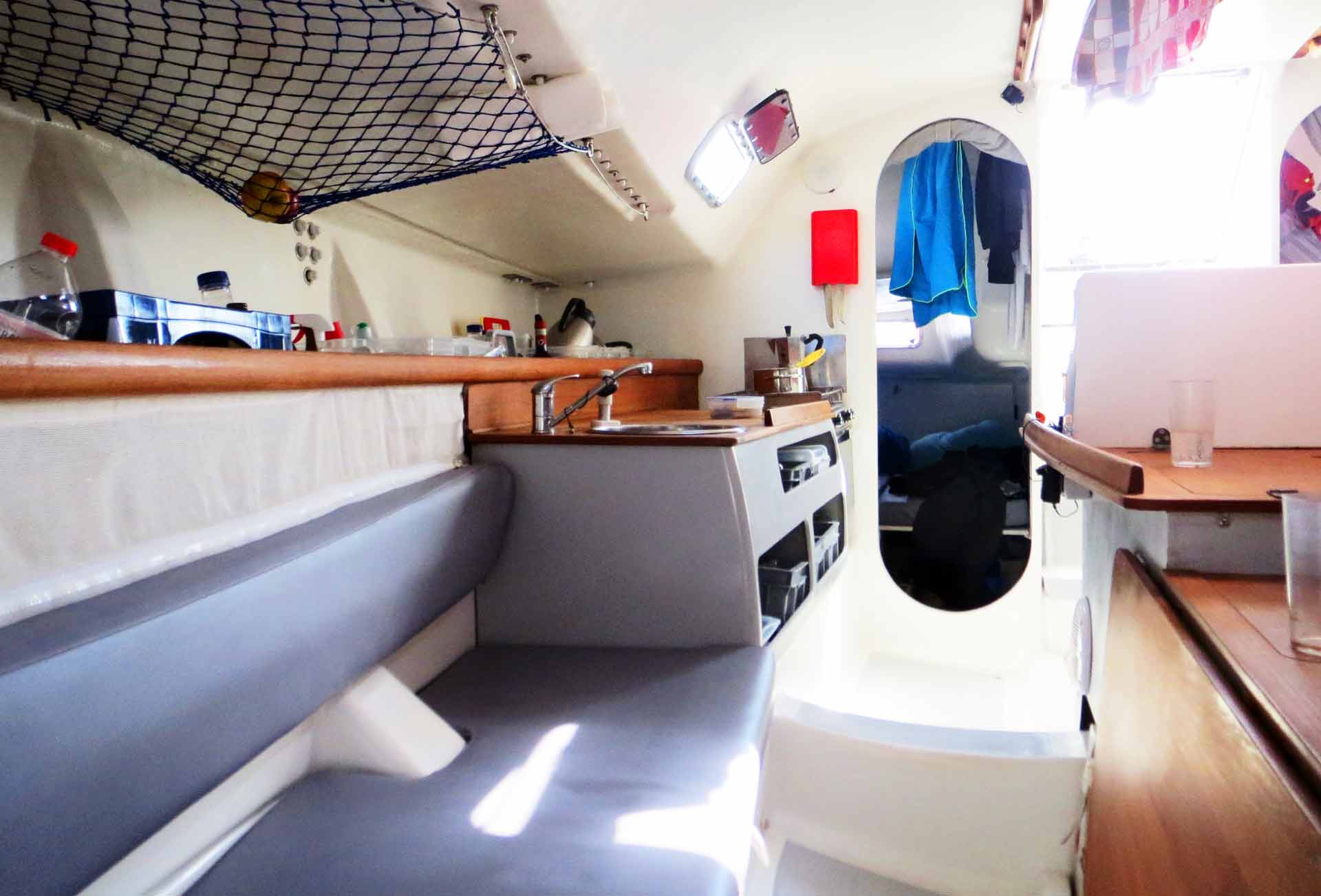
If one can adapt to this bare and uncomplicated style of sailing by actively abstaining from luxury I would say yeah, cruising with a Class 40 can be done and should be done! Why wasting precious time on lame old fashioned cruisers? Why not prowl the oceans with speed, arrive early and spend more time? Well, I guess it´s because these days a classy wooden Hallberg-Rassy interior has its fans still – and besides, controlling a yacht like the Pogo 40, going wet and fast with extreme heeling is prospect of asking too much of the ordinary family skipper.
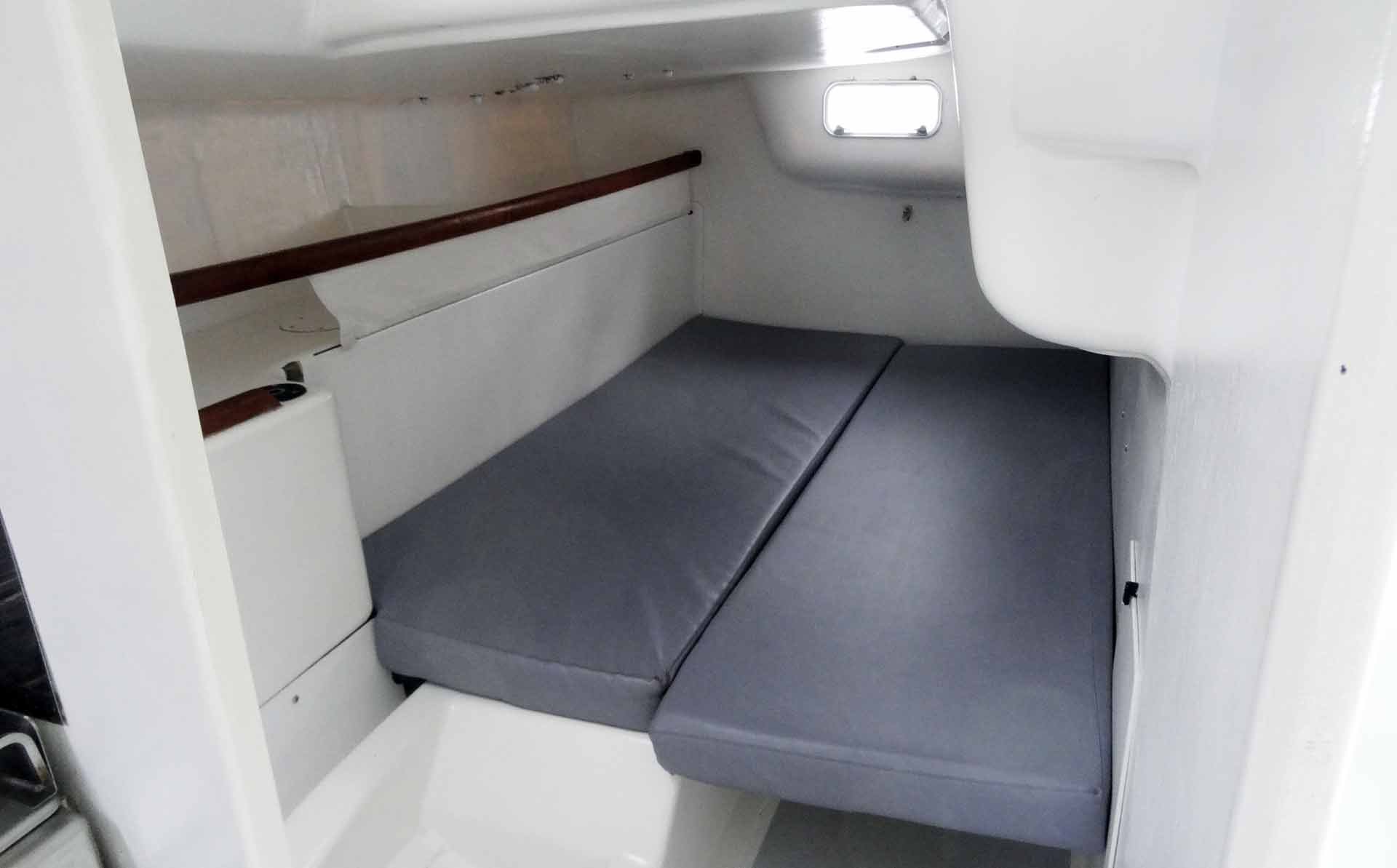
Looking at the sparse interior fitting – even when thinking of replacing the faux water proof leather of the cushion by a friendlier, fresher color, it´s still hard to envision myself and my family going on a long cruise (even a short one) in this boat. Well, envisioning myself I can, but the family … Nevertheless, there are reports of some families doing exactly this.
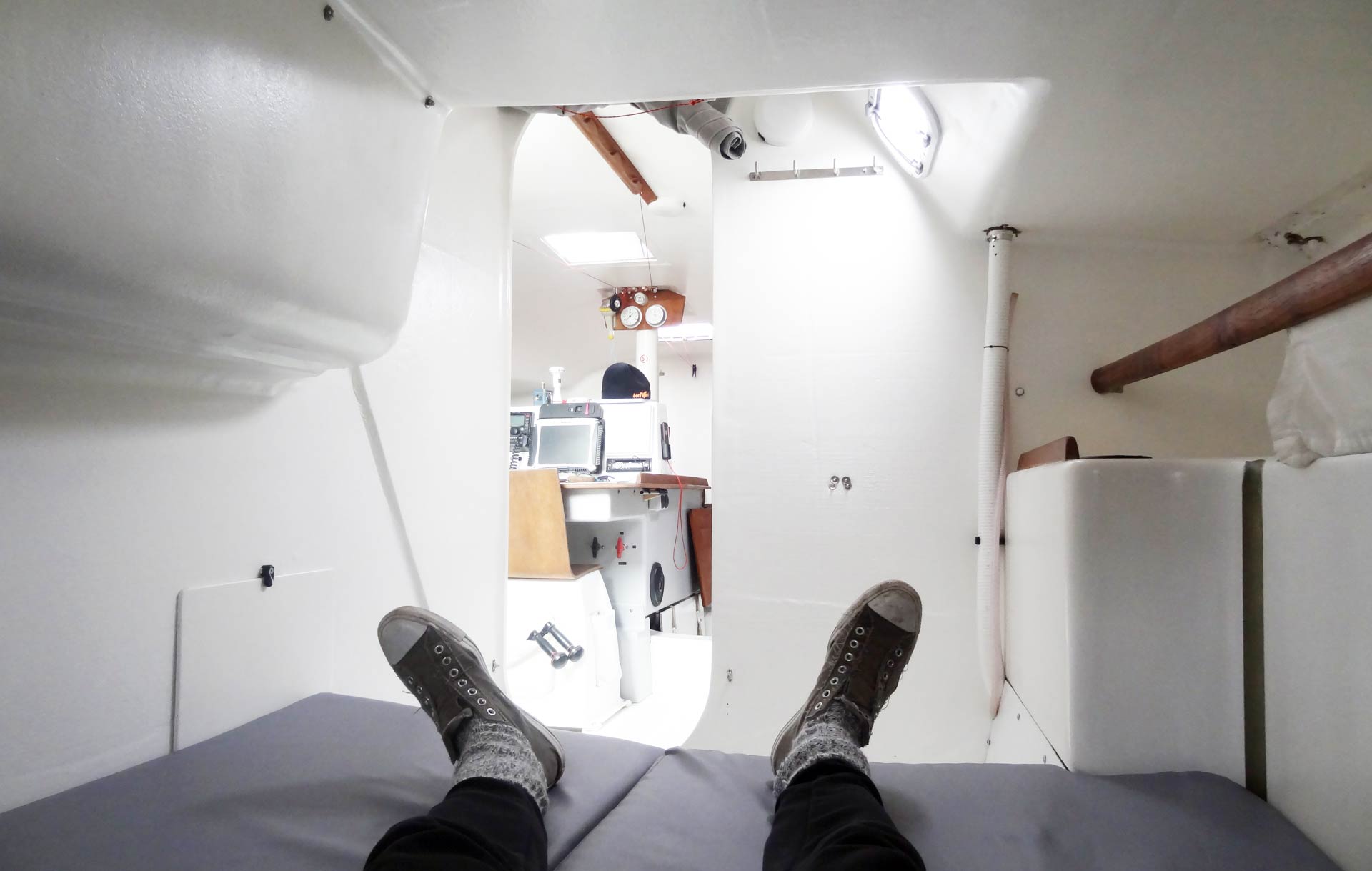
And the more I think about it – given that I can build up more and more competence and sailing abilities over time – this idea becomes attractive and tempting to dream of ever more. I just love this no-frills-approach to sailing (apart from the not-so-no-frills demand of the boat to be controlled with aplomb), this clean, white, bare surfaces. No wooden panels to care about, easy to maintain and clean, no doors, no portholes – no frills.
I fell in love …
And with all these no frills-commodities, there comes so much joy, so much adventure, so much fun. So much demanding in this boat and – which is most attractive I would say – so much gain in reachable distance! Going faster than 10 knots at virtually any time increases the range of activities extremely: Going faster could mean to reach more distant places or reach more places in the same time. Fascinating. And, sadly enough, unreachable for me (and totally impractical as well). But there´s a solution: Simply by booking another cruise on these fantastic sailing machines.
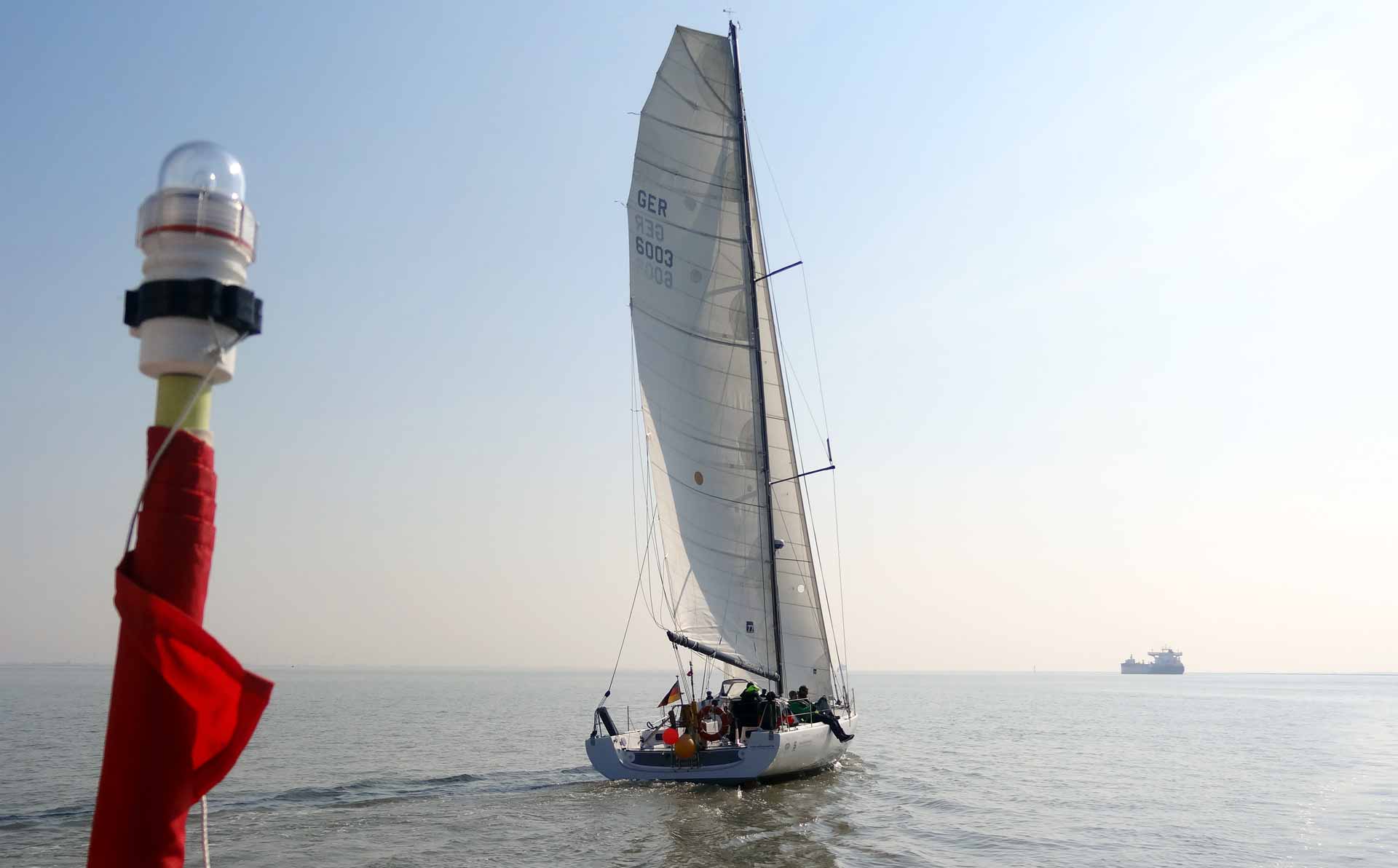
An alternative for owners who seriously consider to get a Class 40 could be the smaller yet comparable Class 9.50 racer of which some interesting boats are on the market, or – very interesting indeed – a Beneteau Figaro II. A sailing yacht legend of which I am going to publish a couple or articles in the near future.
Bottom line: Class 40 sailing has opened my eyes and thinking back to the wonderful 110 miles aboard POGO 1 still thrills me.
Thanks to Ole Macke for these wonderful Pictures

The sails of a Class 40 explained by the engineer who designed them
- November 17, 2022
- No Comments
THE PERFECT GIFT!
Give or treat yourself to a subscription to the print + digital Journal of Sailing and for only 69 euros a year you get the magazine at home plus read it on your PC, smartphone and tablet. With a sea of advantages.

After a week of being “stragglers,” with an Atlantic Ocean that did everything it could to scramble the Route du Rhum 2022 competitors , for the Class 40s, with less than 2,000 miles to go, there seems to be a glimpse of light at the end of the tunnel. And the light of course is none other than the entry of the trade winds, which become apparent when the virtual halfway mark has now been passed. Perhaps, using a bit of imagination, the smell of the air is starting to change, the wind is getting warmer and changing consistency, but the skippers’ heads still cannot go toward land, not at least if a good result is to be brought home.

Tradewinds signify the final farewell to the upwind and entry into the carrying gaits. Now, in addition to the skippers’ strategy, boat speed will be decisive. Sails will still play a key role, and it was about them that we spoke with Aerospace engineer Michele Malandra, designer for North Sails Italy , who edited for the Class 40 Allagrande Pirelli by Ambrogio Beccaria the design service, which is the study of various sail plan options to be adapted to Allagrande’s hull (a somewhat different job as you will read compared to the design of the single sail n.d.r.). Before we read the Engineer’s words and find out how the sails of Beccaria’s boat came to be, let’s look at what our people are doing in the Ocean.

Route du Rhum – What the Italians are doing
Our spotlight is always on the Class 40s , where Ambrogio Beccaria now occupies fifth position and Alberto Bona on IBSA Group is in seventh. Andrea Fornaro, on the other hand, after a technical stop in the Azores for a keel check that showed some problems, restarted and is sailing close to 15th position.

Beccaria and Bona are in the lead group , among the boats that will potentially go for the podium, clear of the breakaway of Yoann Richomme in the lead who does not seem intent on leaving any openings for his opponents.

Beccaria in the last 24 hours seems to have been less effective than usual, probably the autopilot that can no longer work in “wind mode” but only compass starts to weigh on Allagrande’s pace, although the physically toughest part of the race for the skipper seems behind him. He dropped back to the rear of the frontrunners Alberto Bona, who instead tried to keep a very high pace in the last 24 hours to stay hooked to the front of the race. However, both remain in the running for an important result and have cards to play for this second part of the journey.
Route du Rhum – How the sails of a Class 40 are made.

After Pietro Luciani ‘s commentary on sail configuration , and Tommaso Stella’s on the halyards and rigging of a Class 40 the floor was passed to another super technician, Engineer Malandra of North S ails who studied various sail plan options for Allagrande Pirelli .

We asked him how many sails a Class 40 has and how a designer can “play” with the sail plan to seek maximum hull performance. And of course we also talked about the sails for carrying swells that will be indispensable now in the trade winds.
Design freedom on Class 40 sails

“There is a lot of design freedom on the sail plan,” Michele explained . “The big stakes are two: the maximum summed area of mainsail and jib , which has a limit, and the ban on using carbon . The first limitation actually leaves a lot of room, because it is possible to variously distribute the surfaces between mainsail and jib . In the case of Ambrose, I was in charge of doing aerodynamic studies of different sail plan configurations (we call them design services), especially regarding the distribution of the mainsail-jib surface. With our software we can do very precise simulations on various types of planes, and also simulate how the boat reacts to adjustments. The design of the profiles of the individual sails then was done by our French colleagues, who have a huge backgroung in these classes.
Doing an aerodynamic study also means, for example, deciding at what height to put the sail attachments and thus the halyard exits in the mast , another option on which the Class 40 regulations leave room for designers to move.
At this stage of study, it is crucial to figure out the best sail plan based on the keel designed by the designers , Gianluca Guelfi and Fabio D’Angeli in the case of Allagrande Pirelli.

“The sail plan alone doesn’t go anywhere,” Malandra points out. “My job is to make the right fit between what’s above with what’s below . We did simulations on what each type of sail plan would entail for the boat by analyzing the forces and moments produced, and we passed these analyses to the designer who evaluated them based on the characteristics of the submerged part of the boat. For example, with the same sail shape, we evaluated what the best rake angles (mast tilt on the fore-aft axis) were.
There is a limit to the boom travel to the stern , whose trope must be 80 cm inside the stern limit. When we were moving the sail plan back and forth in the simulations we had to deal with this limitation, and figure out how much area to move to the head of the mainsail when we went back with the mast. Moving the mast back you have to decide whether you want to keep a given area of mainsail and thus stretch it vertically, or decrease its area and add to the Solent. In practice, it is ultimately a compromise choice between the aerodynamic part and the immersed component. Having thought of a boat with the trim very much aft the mainsail area had to deal with that 80 cm limit.
What materials are the sails of a Class 40 made of and how many are on board?
“We made an aramid mainsail with 3 coats, a solent/J1 on garrocci with a vertical reefing also made of aramid, J2 same material, but rollable with vertical battens, and then the turret/J3 . To these sails were added two Code 0 Helix polyester , one for masthead and one fractional, one for light air and one for wind. And then we made three asymmetrics, one on each halyard height, A2-A4-A6 . For load-bearing gaits, therefore, the inventory is very rich. Compared to a crew gennaker, however, these are somewhat different sails for soloists: solo gennakers can also sail at tighter angles than intended to possibly limit sail changes. And in general that of making “tolerant” changes between sails is also done with upwind sails.
Instead, Allagrande Pirelli is the only Class 40 in the fleet with a steerable bowsprit , an option that could have opened up some unconventional choices. “There was a lot of space opening up because of the steerable bowsprit at the design level. We could definitely have made “rounder” sails to try to aim for more pronounced angles at the leeward. However, it meant making a sail that was too specific and unsuitable for solo sailing where a sail has to be able to work effectively even if used a little outside its angle ranges.” Designer and Aerospace Engineer’s Word.
Mauro Giuffrè

Leave a Comment Cancel Reply
Your email address will not be published. Required fields are marked *
This site uses Akismet to reduce spam. Learn how your comment data is processed .
Check out the latest issue

Are you already a subscriber?
- Read your magazine from your pc here! >>
- Renew your subscription >>
- Reset your account password >>
Your boating vacation in the Adriatic and Sicily is top notch with these operators – Ep. 3
The 4 partners to take a boating vacation around the world – ep. 2, 5 charter operators with bases in campania and sardinia – ep. 1, do you need power on board try these generators, ultimi annunci.
Sign up for our Newsletter
We give you a gift

Sailing, its stories, all boats, accessories. Sign up now for our free newsletter and receive the best news selected by the Sailing Newspaper editorial staff each week. Plus we give you one month of GdV digitally on PC, Tablet, Smartphone. Enter your email below, agree to the Privacy Policy and click the “sign me up” button. You will receive a code to activate your month of GdV for free!
You may also be interested in.

Luna Rossa: velvet victory over Ineos Britannia (penalized at the start)
Third day of America’s Cup Preliminary Regattas in Barcelona, with Luna Rossa Prada Pirelli engaged against Ineos Britannia. Penalties at the start for the British and then dominance of the Italian Team that will race tomorrow against Emirates Team New

Bruni-Spithill show at the start, Luna Rossa beats American Magic
Second day of America’s Cup Preliminary Regattas in Barcelona, with Luna Rossa Prada Pirelli returning to the water to try to redeem a first day made of lights and shadows, awaiting the Italian crew the highly anticipated challenge against American

America’s Cup, interlocutory day for Luna Rossa in Day 1 of Preliminaries
After months of waiting, the day has finally arrived for the America’s Cup when the AC 75s confront each other on the water in the last Preliminary Regatta, there are no points up for grabs yet but these will come

Olympic sailing: for everything to remain as it is, everything must change
The Paris 2024 Olympics brought Italian sailing its best result ever, two gold medals each reflecting in its own way the success of a system that the Federation has been able to build over time. In women’s windsurfing we have
Sailing Newspaper
Editor-in-Chief: Luca Oriani
TO COMMUNICATE WITH THE EDITORIAL STAFF 02 535 811111 – [email protected]
FOR ADVERTISING Senior account: Guido De Palma: tel. 02 535811208 cell. +39 347 2347433 [email protected].
Pierfrancesco Pugno: cell. +39 3496621980 [email protected]
Cookie policy Privacy policy

INFO SUBSCRIPTIONS, DIRECT SALES AND DIGITAL PRODUCTS
tel. 02 535811 111/200 [email protected]

Search form

- MaineBoats Blog
American Sailor Rounds Cape Horn
Tuesday, january 30th 2024.

American solo sailor Cole Brauer, aboard her Class 40 sailboat First Light , has rounded Cape Horn and is back in the Atlantic Ocean, chasing race leader Phiippe Delamare toward the finish in A Coruña, Spain.
Brauer, who sailed for many years out of Boothbay, and who now calls Newport, Rhode Island, home, is one of five Americans and 20 skippers participating in the Global Solo Challenge round-the-world singlehanded race. Cape Horn is the third and final great cape that Brauer had to round. She passed the Cape of Good Hope and Australia’s Cape Leeuwin earlier in the contest.
According to the race’s online leaderboard , Bauer is estimated to arrive at the finish line March 1. She started racing on October 29, 2023.
Bauer, 29, began sailing summers in Boothbay at age 6. Her parents eventually moved there year round, and she worked at Boothbay Harbor Yacht Club as a sailing instructor while living at home.
“Sharing her experience live on Instagram, she conveyed tears, joy, and relief as she reached east under fractional code zero and a reefed mainsail. Too far to see the Cape, Cole chose an offshore route to avoid the risks associated with heavy seas in shallower waters,” race organizers reported on January 29.
You can follow Brauer’s adventures on Instagram at @colebraueroceanracing.
Share this post:
Related posts.

Digital Edition Available ×
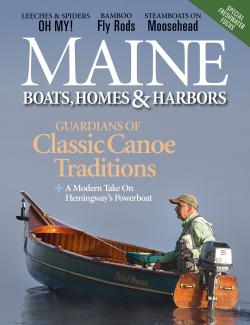
Can't get to the store to buy your magazine? We deliver the stories of Maine's coast right to your inbox. Sign up here for a digital edition .
2023 Maine Boat & Home Show ×

Join Us for the Maine Boat & Home Show !
Art, Artisans, Food, Fun & Boats, Boats, Boats
August 11 - 13, 2023 | On the waterfront, Rockland, Maine
Click here to pre-order your tickets.
Show is produced by Maine Boats, Homes & Harbors magazine.
Sailboat collection

- Last update: 1st April 2020
- Oceanis 30.1
- Oceanis 34.1
- Oceanis 37.1
- Oceanis 40.1
- Oceanis 46.1
- Oceanis 51.1
- Oceanis Yacht 54
- Oceanis Yacht 60
- FIGARO BENETEAU 3
- Heritage sailing yacht
- Flyer 6 SUNdeck
- FLYER 6 SPACEdeck
- Flyer 7 SUNdeck
- Flyer 7 SPACEdeck
- Flyer 8 SUNdeck
- Flyer 8 SPACEdeck
- Flyer 9 SUNdeck
- Flyer 9 SPACEdeck
- Antares 7 Fishing
- Antares 8 Fishing
- ANTARES 11 FLY
- Gran Turismo 32
- Gran Turismo 36
- Gran Turismo 41
- Gran Turismo 45
- Swift Trawler 35
- Swift trawler 41 Sedan
- Swift trawler 41 Fly
- Swift Trawler 48
- Swift Trawler 54
- Grand Trawler 62
- Heritage motorboats
- A REMARKABLE ANNIVERSARY
- Architects and Designers
- Become a BENETEAU boat owner
- Tests and Awards

- Description
- Main Points
- Specifications
With an outstanding level of equipment for a production cruiser/cruiser, the First 40 has won fame for a unique international record of achievements in IRC, as well as ORC. A reference in the forty foot class, this boat does not compromise on safety and yet its level of comfort makes living on board very pleasant.
Naval designer : Farr Yacht Design
Interior designer : Nauta Design
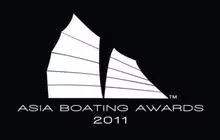
Exterior design
Highlighted with subtle decoration and a set of black stripes on a grey hull background, the bottom is as appealing to the eye as it is sailing. The First 40 ‘Carbon Edition’ is delivered ready to race. In this format she has a carbon mast, lead keel, a black composite steering wheel, and a Raymarine electronics pack adapted to regatta racing.
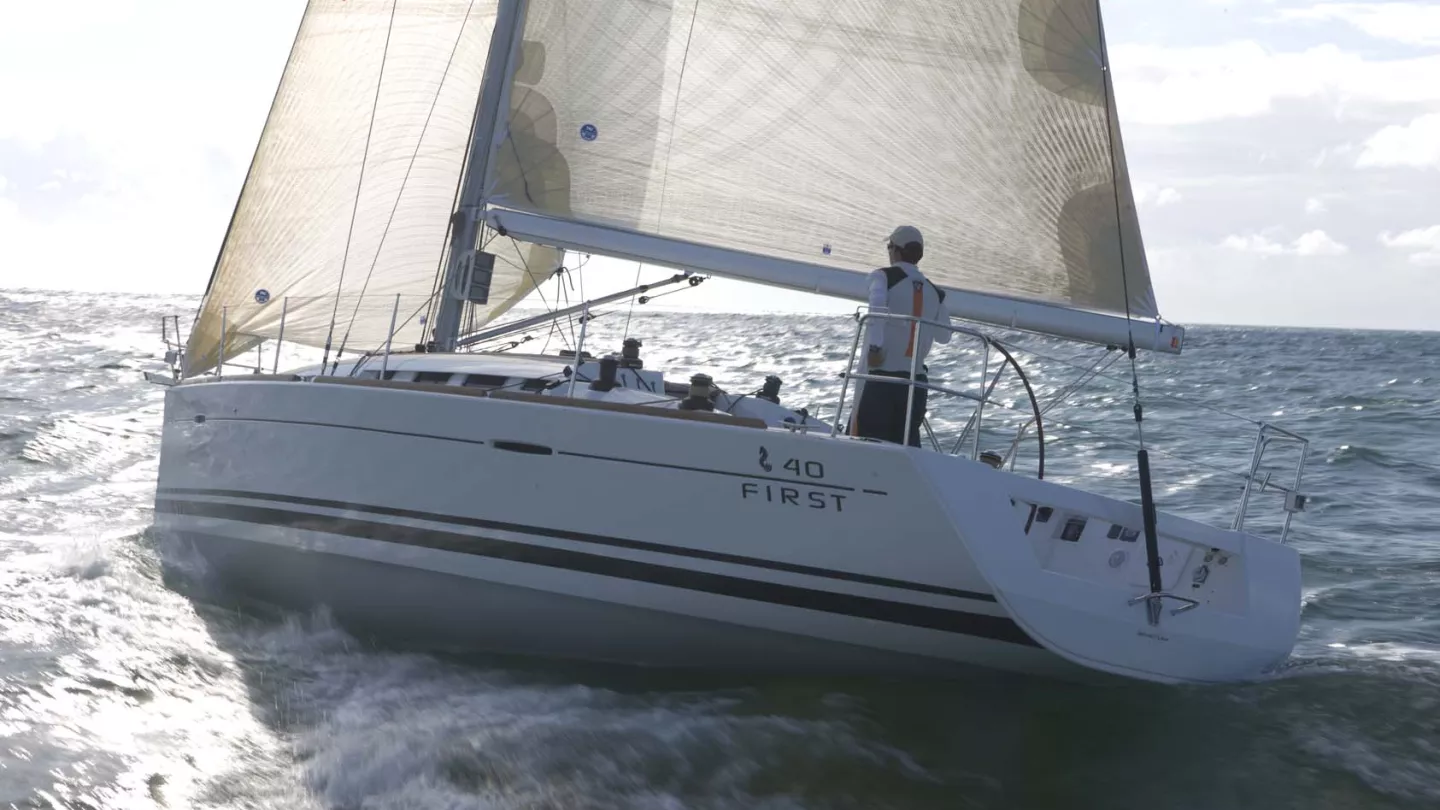
Interior design
The unusual design of the interior layout of the First 40 offers maximum habitability. The shape and size of the saloon seats allow 1.95 m long berths. The wood table has two fold-down flaps and two possible positions. It can therefore seat six people in its usual setup and lowers to free space or extend the berths.
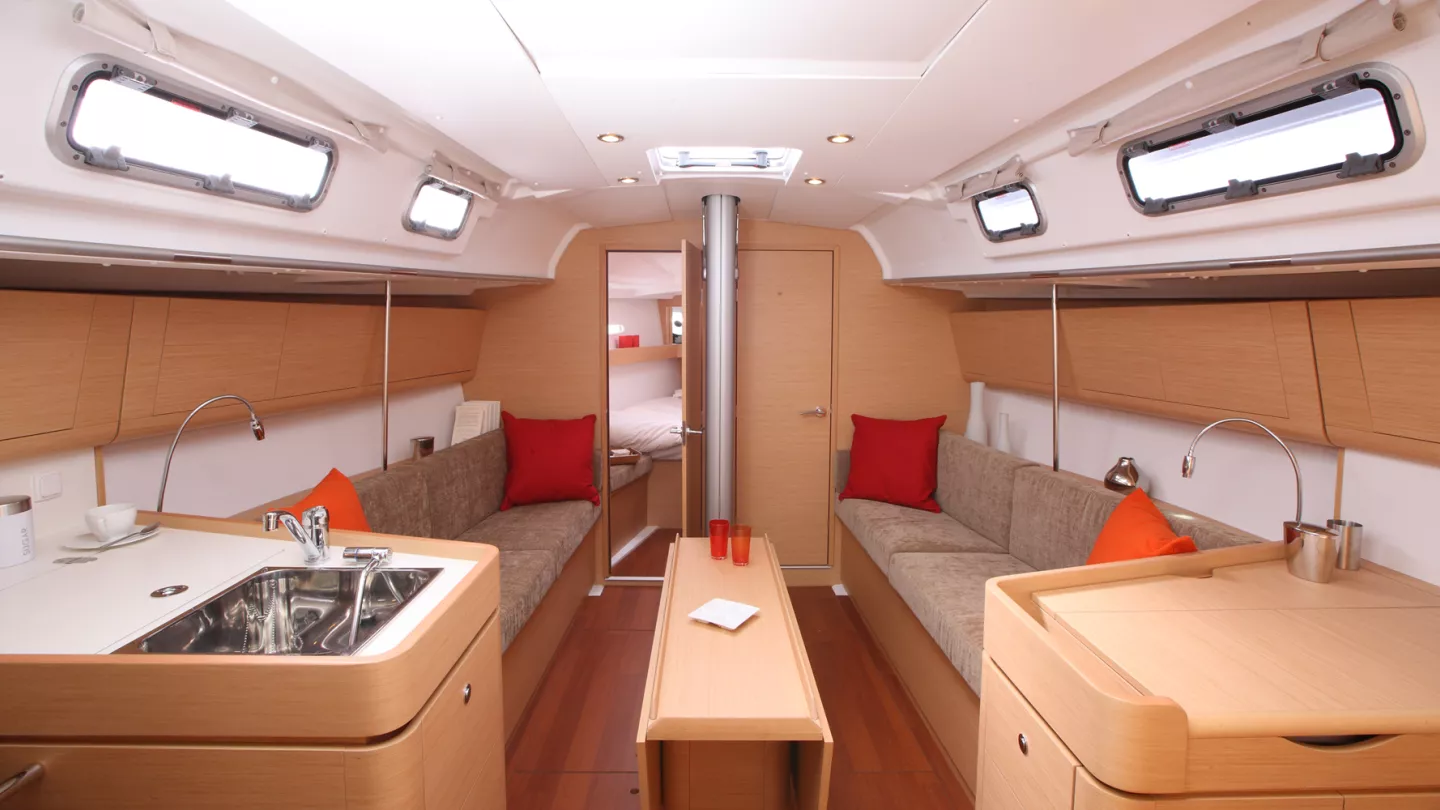
Crew sensations
Designed to lead the race, the First 40 supplements its choice of performance with solutions that provide crews with a high level of comfort.
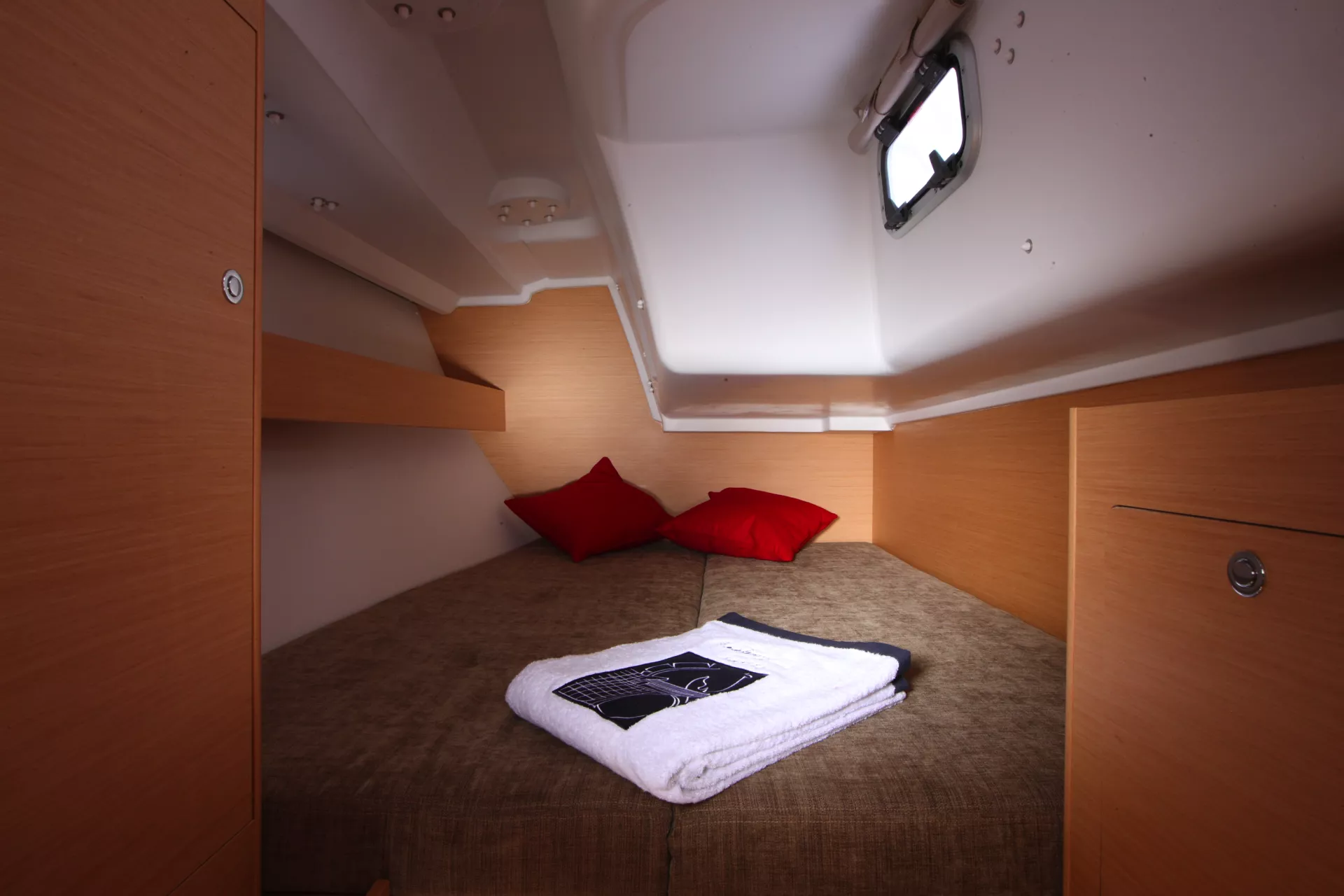
The boat can accommodate a crew of eight, offering two symmetrical aft cabins with double berths (2.00 m by 1.50 m), a master fore cabin (1.90 x 1.40 m) with shower room and two ordinary berths can be made up in the saloon.
The First 40 users and spinnaker retractable carbon bow sprit making the use of an asymmetric spinnaker much simpler.
Both light and strong, the equipment has been chosen for its high level of performance: carbon mast, rod rigging, fibre adjustable backstay, rigid boom vang, tilting composite steering wheel.
CHARACTERISTICS
Length Overall
Beam overall
Lightship Displacement
Fuel Capacity
Water Capacity
CE Certification
A12/B12/C12
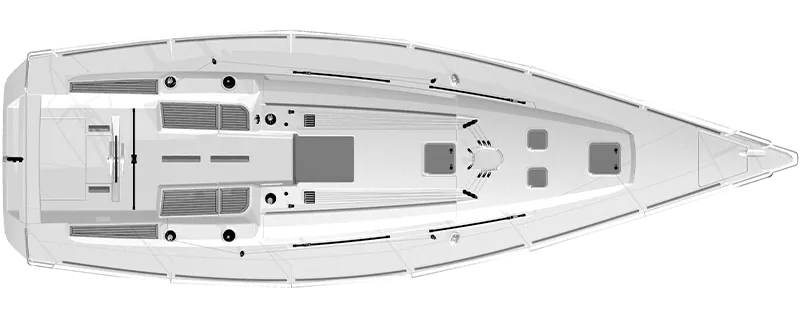
- CE certification: A12/B12/C14
- Raymarine electronics on option, mast foot repeater on bracket.
- Stainless steel tilting central steering wheel.
- Life raft locker in cockpit bottom (width 120 cm x 110 cm x height 50 cm).
- Sail drive engine - 2 blade folding propellers as standard YANMAR Diesel 40 HP
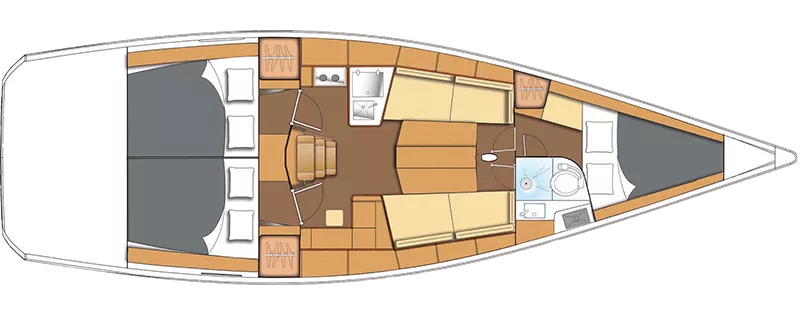
- Double fore cabin, two symmetrical aft cabins with double berths.
- L-shaped galley where you can prop yourself up under sail.
- Heads with shower.
- Saloon: The shape and size of the seats allow conversion into a berth (Length 1.95 m). Height-adjustable multifunctional saloon table (option): - High position for lunch - low position for berth or sail support.
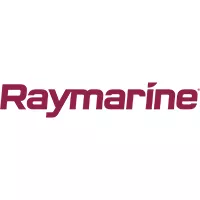
Hall Spars & Rigging

North Sails
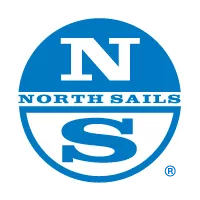
2022 BENETEAU Cup : Off the Coast of Malta
More than 120 participants gathered in the port of Valletta in Malta, from 18 to 19 November, for a friendly meeting to indulge in the joys of sailing.
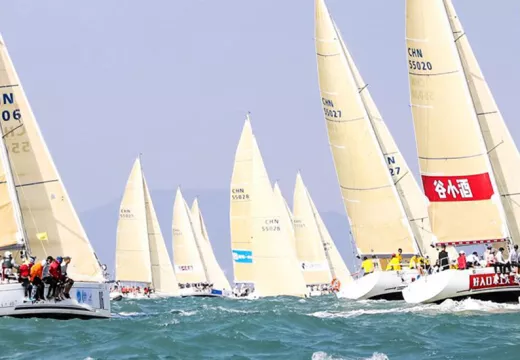
BENETEAU and CHINA CUP commit to popularizing Sailing in China
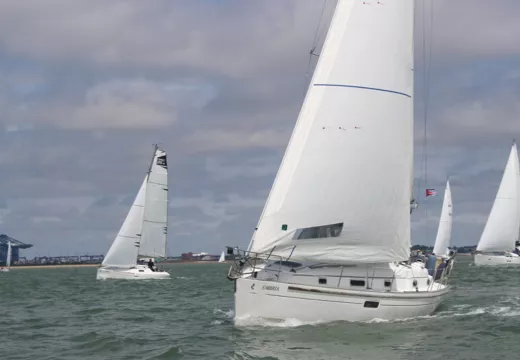
17th annual East Coast Beneteau Owners Weekend
Beneteau services.
With teams for sea trials, financing, customization, events, an after-sales service, and a network of dealers worldwide, BENETEAU delivers the help and expertise every boat owner needs throughout his boating life maintaining an enduring customer relationship.
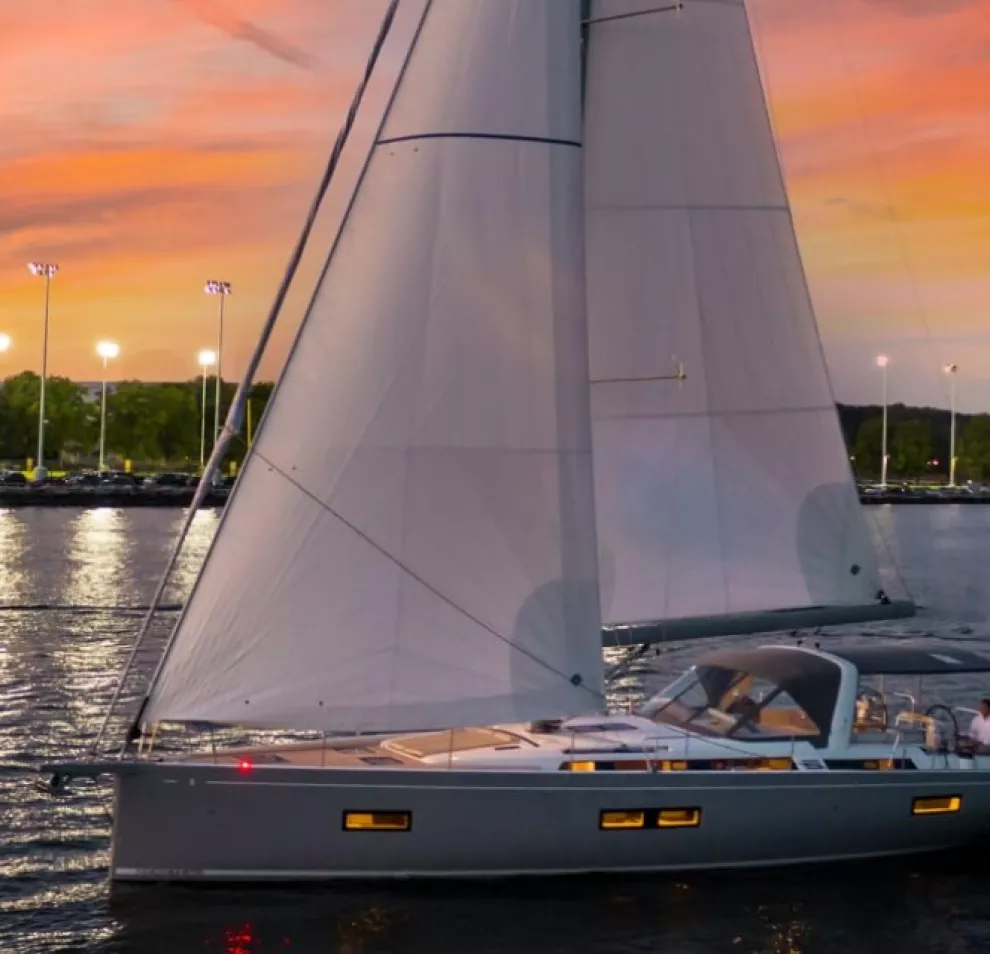
Other boats from the range
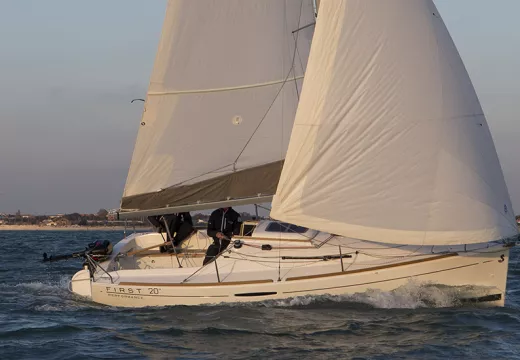
6.4 m / 21'
2.48 m / 8' 2"
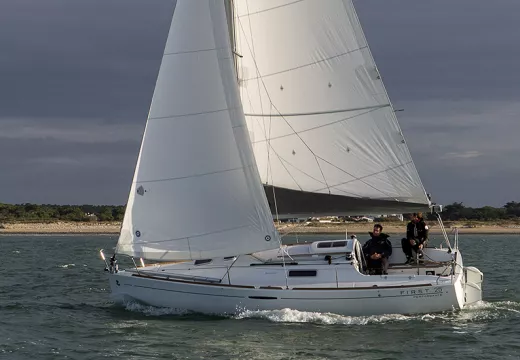
7.9 m / 25'11
2.75 m / 24'7
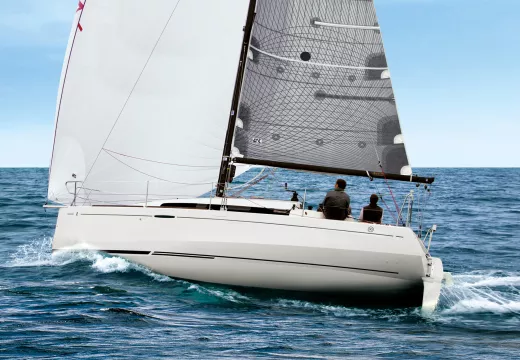
9.81 m / 32'2''
3.23 m / 10'7''
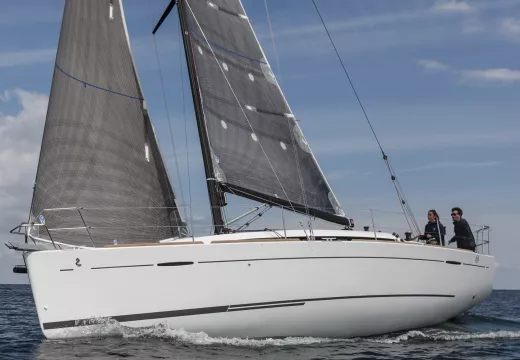
10.85 m / 35' 7"
3.64 m / 11' 11"
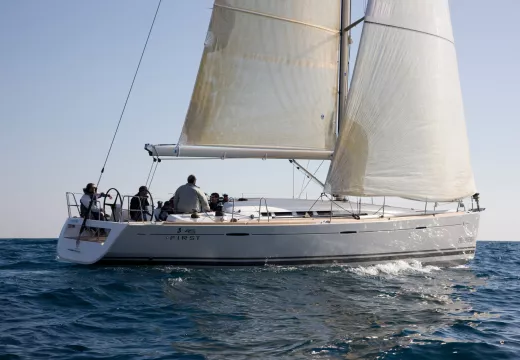
14.07 m / 46’2’’
4.2 m / 13’9’’
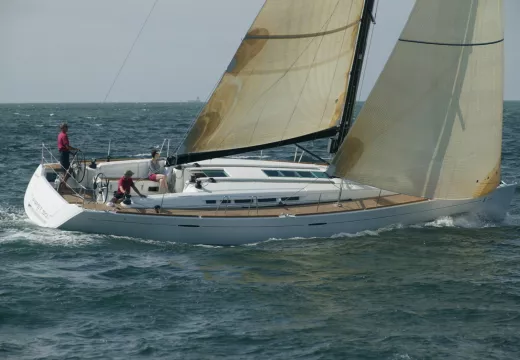
14.99 m / 49’2’’
4.41 m / 14’6’’
Select your area and your language
- American english
- Chinese, Simplified

- Presentation
- Board of Directors
- Races open to Class40
- Championship
- Class40 selection
- Minutes of the Executive Meeting
- Class rules
- Appendix to class rules
- FFV/world sailing documents
- Constitution and internal regulation

3 fiche(s). Page 1/1
- 15 sept. CIC Normandy Channel Race
- 29 sept. Med Max I Occitanie - Saïdia Resorts
- 19 oct. Middle Sea Race

37 - First Light
| Official name : | First Light |
| Design : | Jaz 40 |
| architect : | Owen Clarke Design |
| shipyard : | Jaz Marine |
| Year of first launch : | 2007 |
| National flag : | USA |
| Main skipper : | |
| Owner : | |
Races history
| Races | Runners | Ranking |
|---|---|---|
| Allison GRAY | classement non établi | |
| Allison GRAY | classement non établi | |
| Allison GRAY | classement non établi | |
| Allison GRAY | 4 196h 48min | |
| | 11 | |
| | 6 25j 8h 2m | |
| Rob MAC MILLAN Ryan FINN | 1 | |
| | 7 | |
| | 4 | |
| Fred HALL Alex SIZER | 6 16j 02h 10mn 37s | |
| Alex SIZER | classement non établi | |
| | 7 | |
| | 4 | |
| | 13 24j 02h 49min 16s | |
| | 4 | |
| | 1 | |
| | classement non établi |


IMAGES
COMMENTS
First Light is a 2008 Class40, designed by Owen Clarke Designs and built in the UK by Composite Creations, the same model as ZeroChallenge (formerly Fuji) sailed by Ari Känsäkoski. The Owen Clarke design studio, based in Dartmouth, UK, with branches in the USA and New Zealand, is renowned for designing performance cruising and racing boats ...
Cole Brauer and the Class40 First Light at the GSC: A Woman's Breath Over the Ocean. Cole Brauer, a young American sailor aboard her Class40 First Light, adds a feminine touch to the event with her infectious enthusiasm and passion.
First Light (54), Association Class40 - Centre de formation aux métiers de la mer - Allée du frère Maximin - 85 100 Les Sables d'Olonne - France
March 7, 2024, 5:27 AM PST. By Emilie Ikeda. Aboard her 40-foot racing boat First Light , 29-year-old Cole Brauer just became the first American woman to race nonstop around the world by herself ...
First Light (37), Association Class40 - Centre de formation aux métiers de la mer - Allée du frère Maximin - 85 100 Les Sables d'Olonne - France
Apropos to her boat's name, First Light, Cole Brauer makes her way through the dawn off A Coruña, Spain, to the Global Solo Challenge finish line. Photo: Lydia Mullan. Cole's following has grown over the past five months from around 13,000 followers to 400,000. And they are devoted. Some traveled all the way to Spain from the United States ...
Cole Braucer sailed the Class 40, First Light during the race. The yacht used to be owned by Michael Hennessy, when it was known as Dragon. Credit: Cole Brauer - First Light @colebraueroceanracing/Globe Solo Challenge ... The next Globe Solo Challenge will be taking place in 2027, with the first boats leaving A Coruña on 28 August 2027.
Brauer documented the treacherous Global Solo Challenge for her 459,000 Instagram followers from aboard her beloved 40-foot monohull racing boat, First Light. Like her pint-sized, 100-pound owner ...
NEWPORT - Newport's adopted daughter, all 100 pounds of her, is taking on the world. Cole Brauer, in her beloved and trusted 40-foot yacht First Light, sailed out of Newport Tuesday morning, bound for Spain.In an endeavor she labels far more job than adventure, the 5-foot-2 Brauer is geared to be the first American female sailor to race solo/non-stop around the world.
Fifteen-foot waves crashed over the deck of Cole Brauer's 40-foot racing yacht, First Light, in the turbulent Indian Ocean as she tried to maintain her balance in the cramped cockpit in the stern.
The biennial race features two 668-nautical-mile legs from Newport to St. Georges, Bermuda, and back. The first leg is sailed solo and the second doublehanded, hence the One-Two. With a Gulf Stream crossing, it can be a challenging, navigationally tricky race. On leg one, First Light led the fleet by 18 hours into Bermuda.
Cole Brauer's Instagram feed hardly feels like the work of someone racing a 40-foot sailboat around the world in the Global Solo Challenge. But Ms. Brauer, 29, is not an average ocean racer. In ...
At 100 pounds and 5-foot-nothing, Brauer is a small person with big aspirations, yet what she lacks in size she makes up for in grit. Beginning as a boat captain, the 28-year-old has become a ...
Class 40. Class 40 is a yacht builder that currently has 20 yachts for sale on YachtWorld, including 1 new vessels and 19 used yachts, listed by experienced yacht brokers and boat dealerships mainly in the following countries: France, Croatia, United States, United Kingdom and Martinique.
Reviewing a Class 40 Interior. Down below a Class 40 like the Pogo 40 is a true miracle regarding space. She is a 40 ft. boat - I personally find 40 feet with more than 12.50 meters huge compared to my 33 ft. King´s Cruiser - but due to her extreme width of 4.50 meters internal space is just huge! Even with 5 adults leaving their berths ...
Design freedom on Class 40 sails. Beccaria on board Allagrande Pirelli. "There is a lot of design freedom on the sail plan," Michele explained. "The big stakes are two: the maximum summed area of mainsail and jib, which has a limit, and the ban on using carbon. The first limitation actually leaves a lot of room, because it is possible to ...
The Class 40 is a cheaper boat that can be sailed competitively in a range of conditions either short handed, by two people, or a solo sailor. The class is active in Europe, but growing in North America. Boats are built on a semi-production or custom basis. The class rules though work to keep the boat affordable, limiting exotic materials and ...
The Class40 is a monohull sailboat sea-oriented racing and cruising with a maximum length is 40 feet. The original goal of the class was to make offshore races accessible to amateur sailors. The success of the class has moved it beyond these parameters, with more and more professional sailors attracted to it. Part of the attraction of this ...
American solo sailor Cole Brauer, aboard her Class 40 sailboat First Light, has rounded Cape Horn and is back in the Atlantic Ocean, chasing race leader Phiippe Delamare toward the finish in A Coruña, Spain.. Brauer, who sailed for many years out of Boothbay, and who now calls Newport, Rhode Island, home, is one of five Americans and 20 skippers participating in the Global Solo Challenge ...
Among the first boats designed to the Class 40 rule finalized in 2005. The POGO 40 has gone through a number of different generations since first introduced. ... ", (International Marine, Camden, Maine, 1997), states that a boat with a BN of less than 1.3 will be slow in light winds. A boat with a BN of 1.6 or greater is a boat that will be ...
Sailboat collection. Last update: 1st April 2020. Class 40 is a class of offshore monohull sailboat, raced mainly short-handed and which the main characteristics are defined by box and restriction rules. 4 sailboat specifications, between 40 ft (12.1 m) and 40 ft (12.2 m), are available in the Class 40 collection on Boat-Specs.com:
The unusual design of the interior layout of the First 40 offers maximum habitability. The shape and size of the saloon seats allow 1.95 m long berths. The wood table has two fold-down flaps and two possible positions. It can therefore seat six people in its usual setup. and lowers to free space or extend the berths.
Association Class40 - Centre de formation aux métiers de la mer - Allée du frère Maximin - 85 100 Les Sables d'Olonne - France